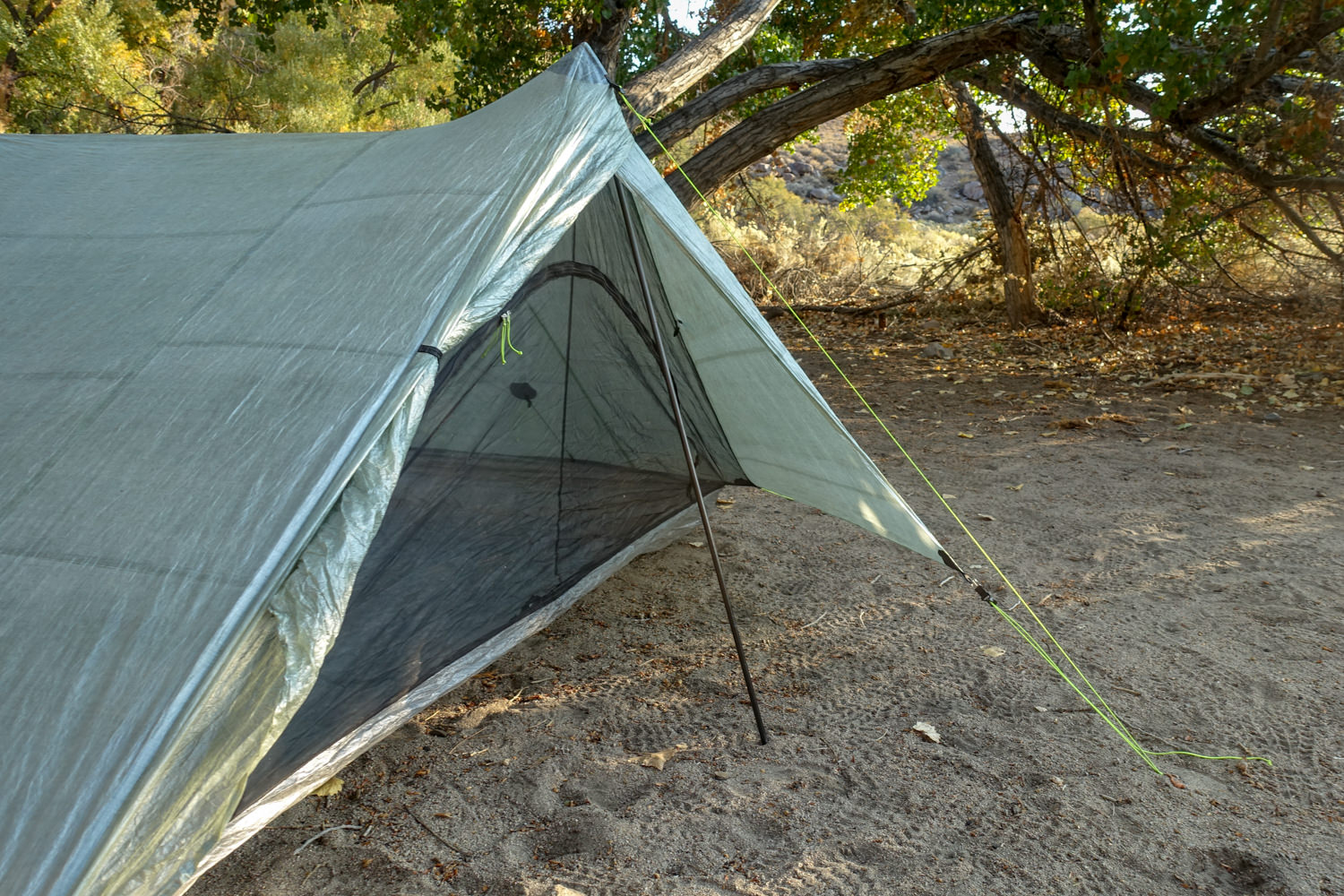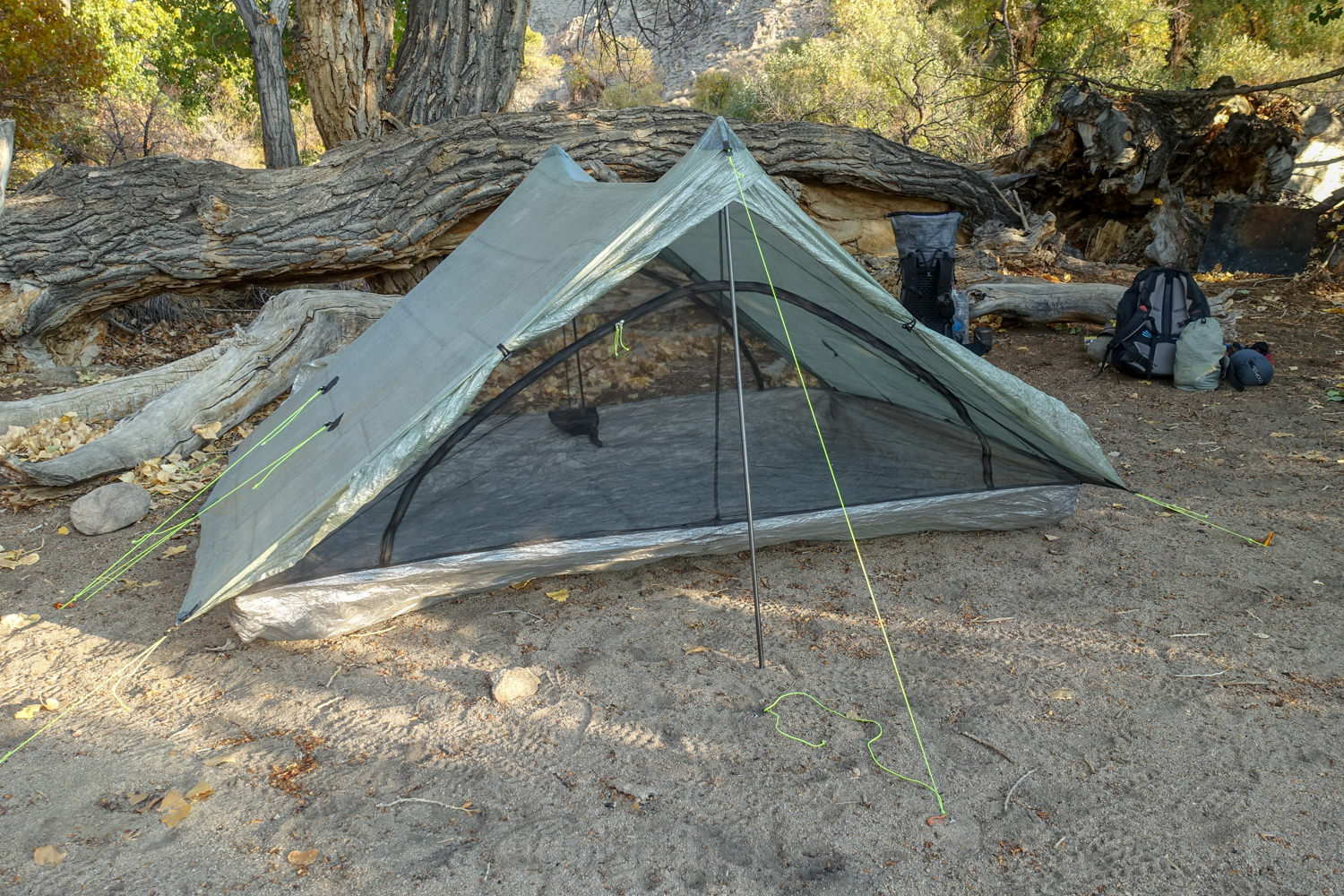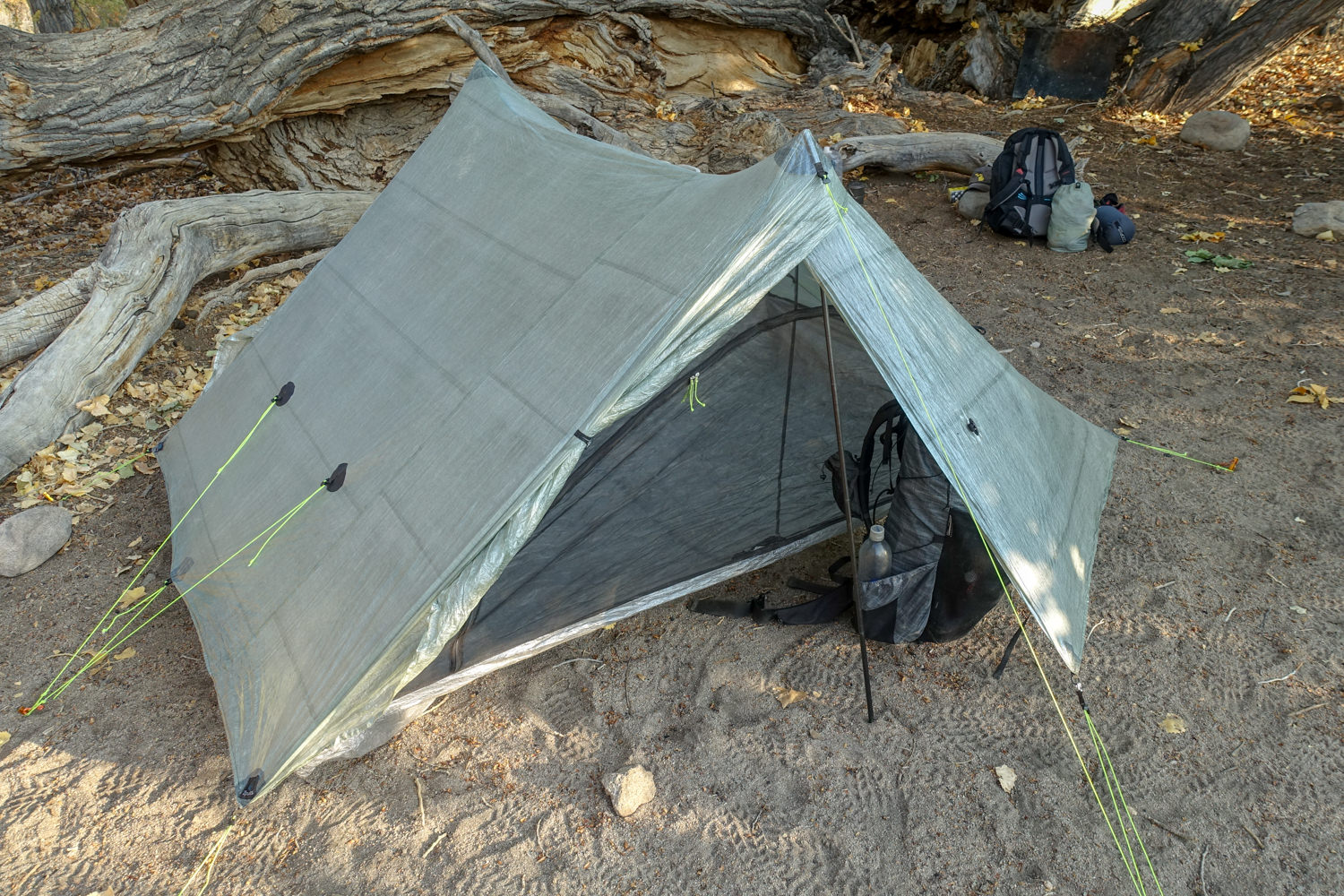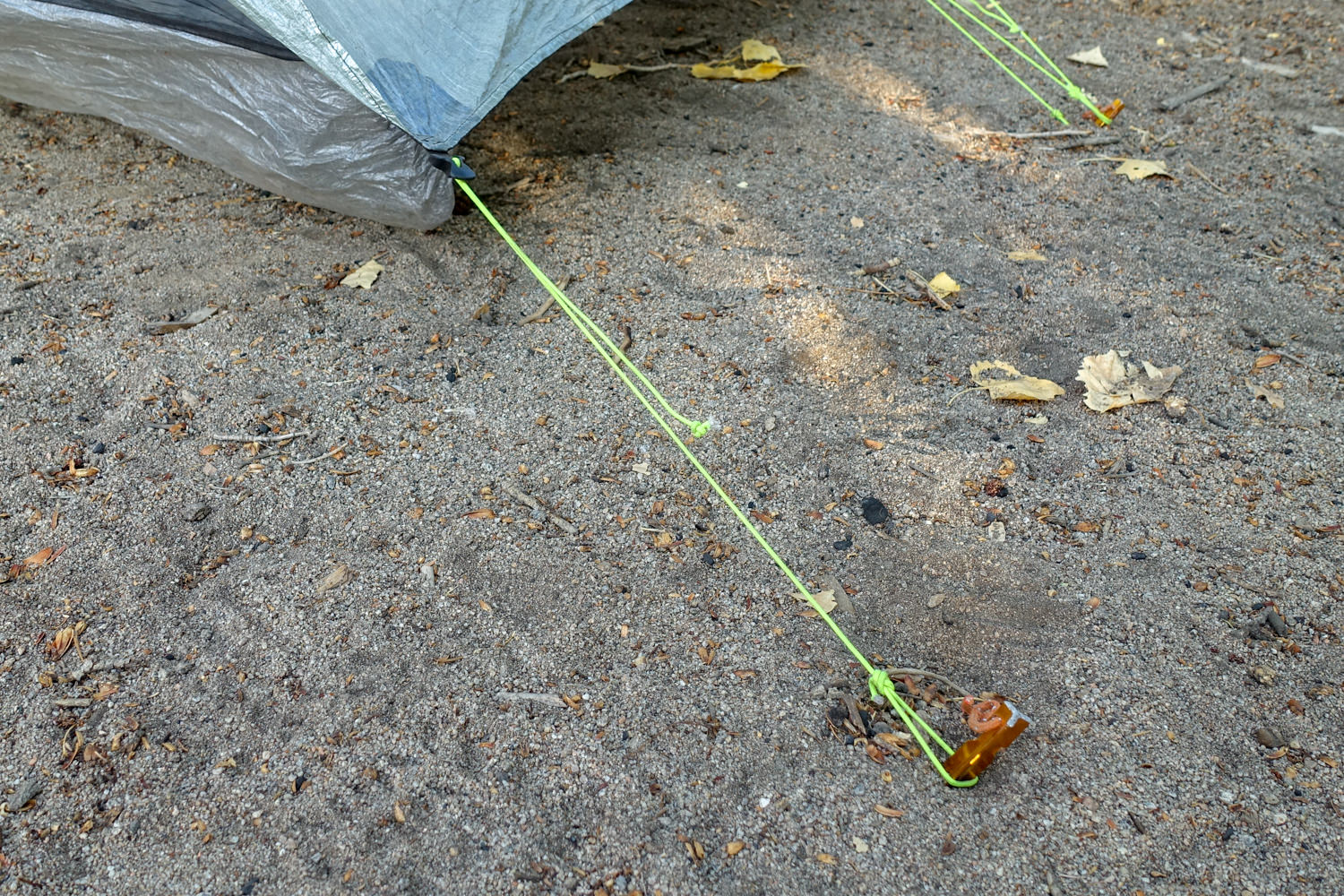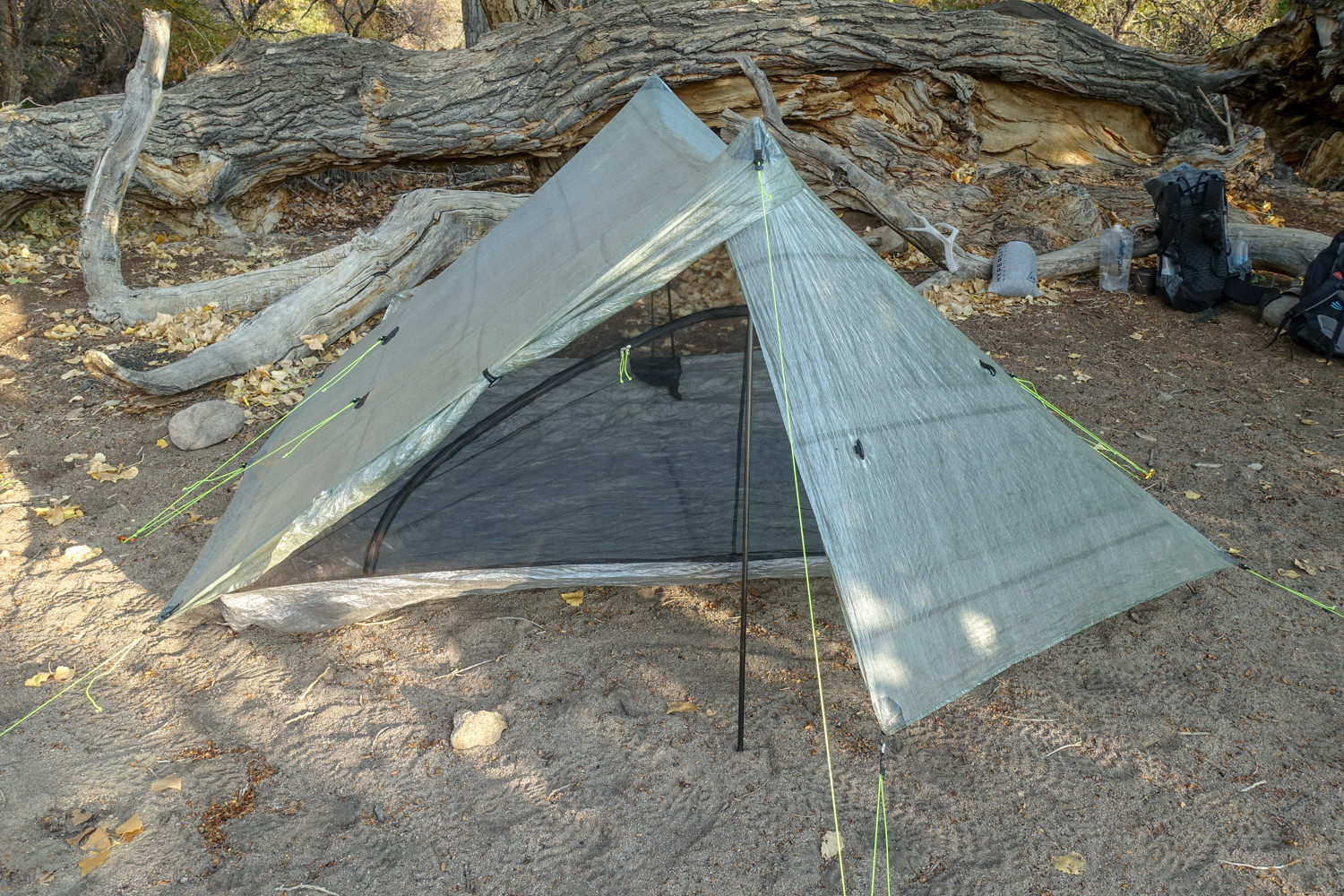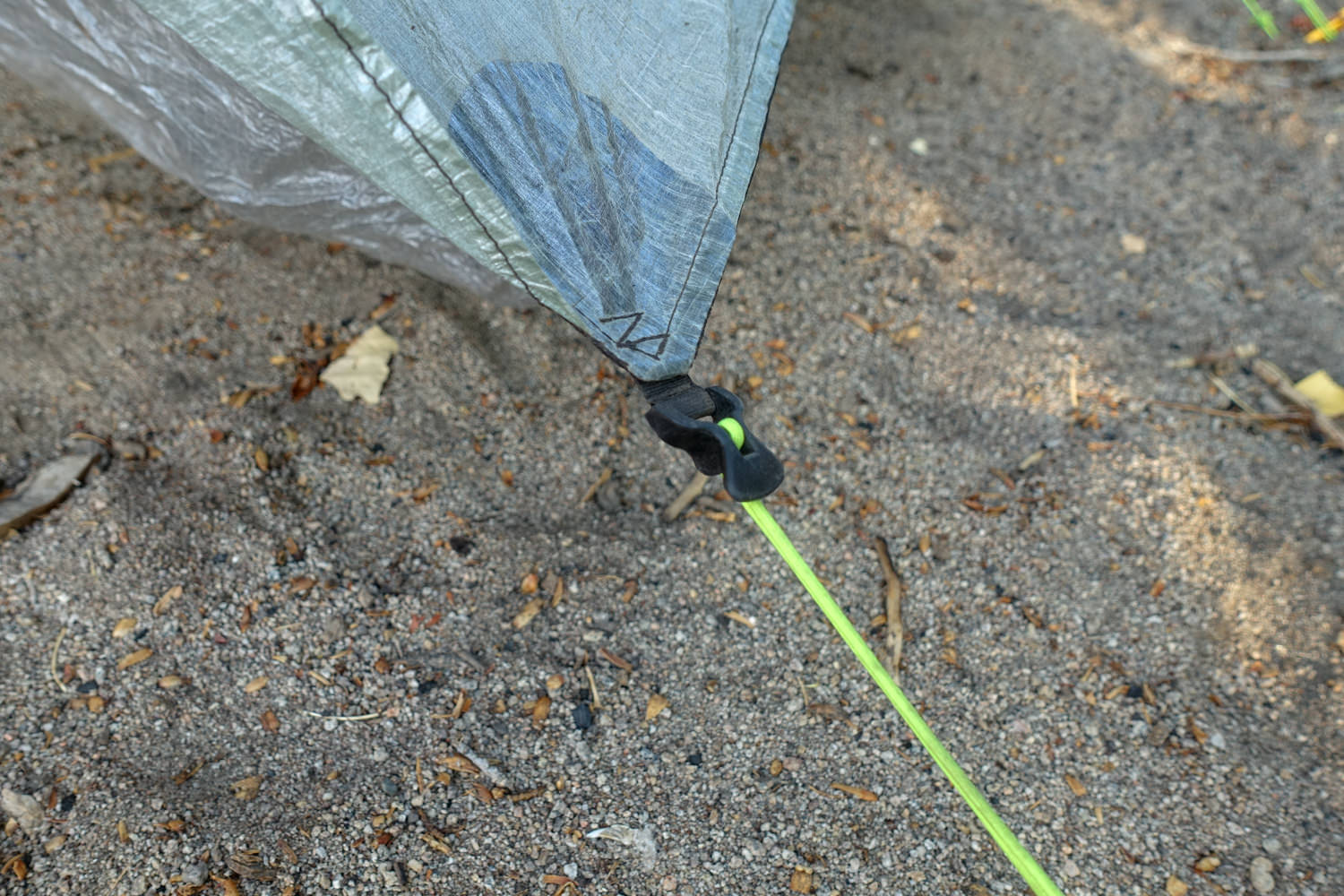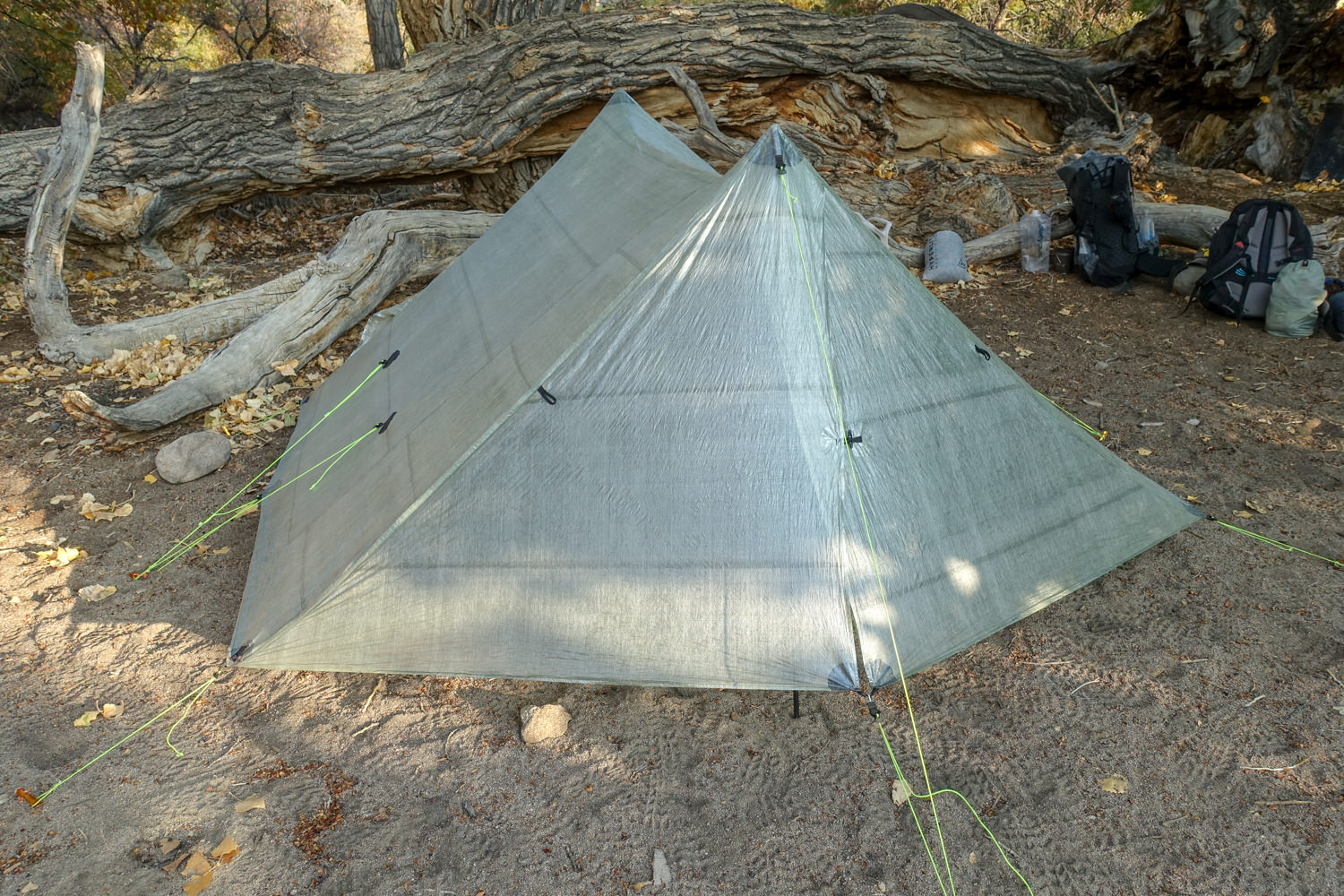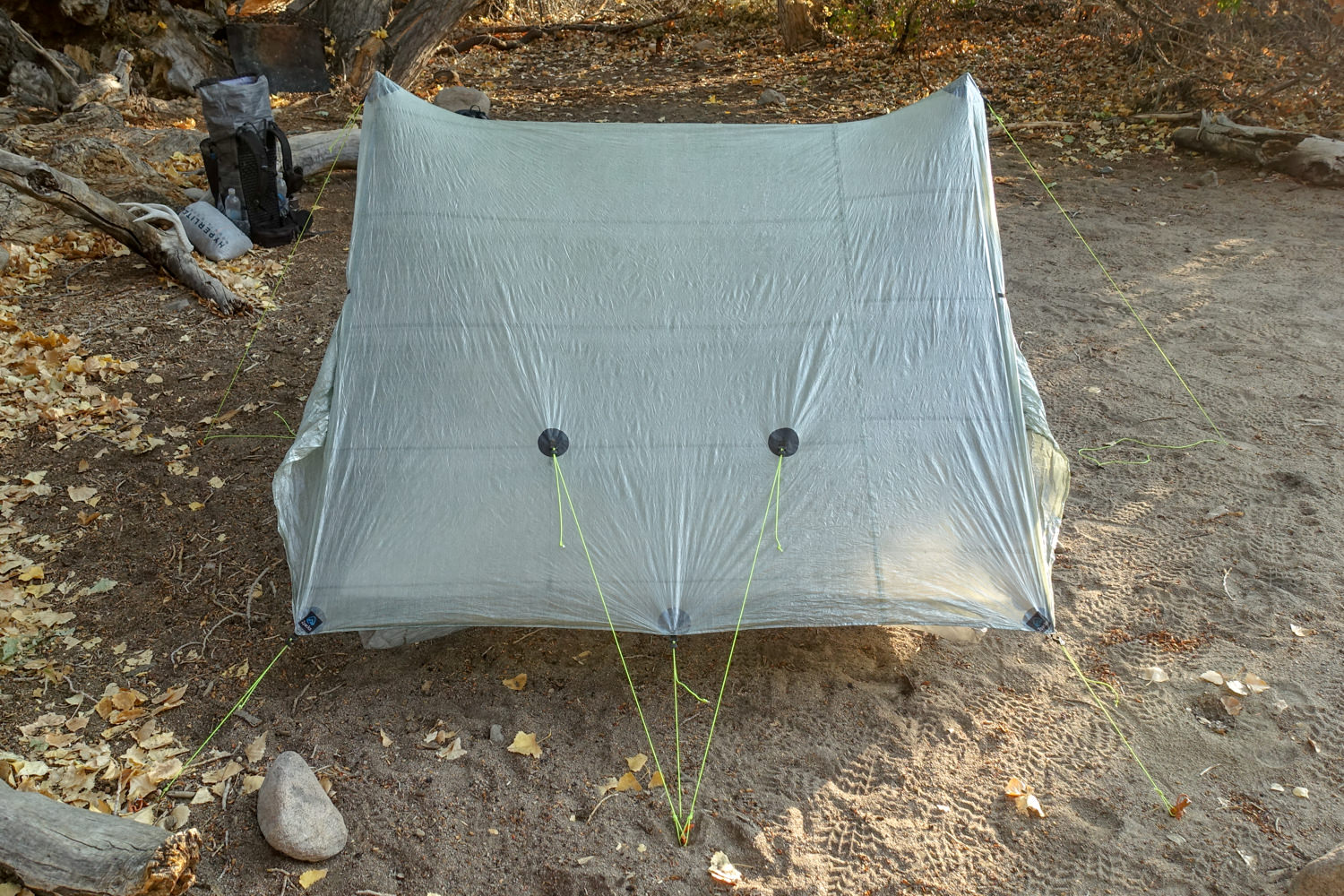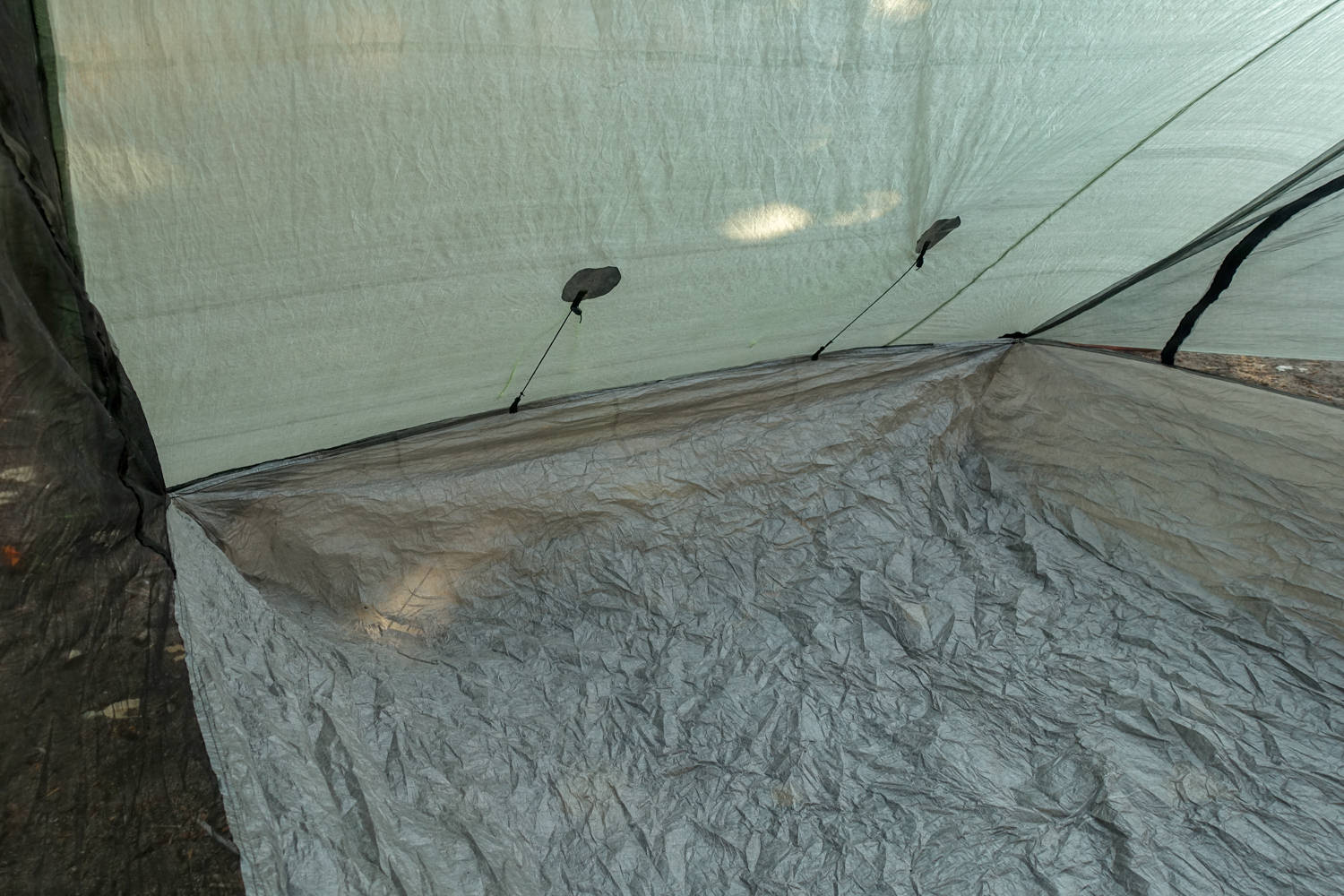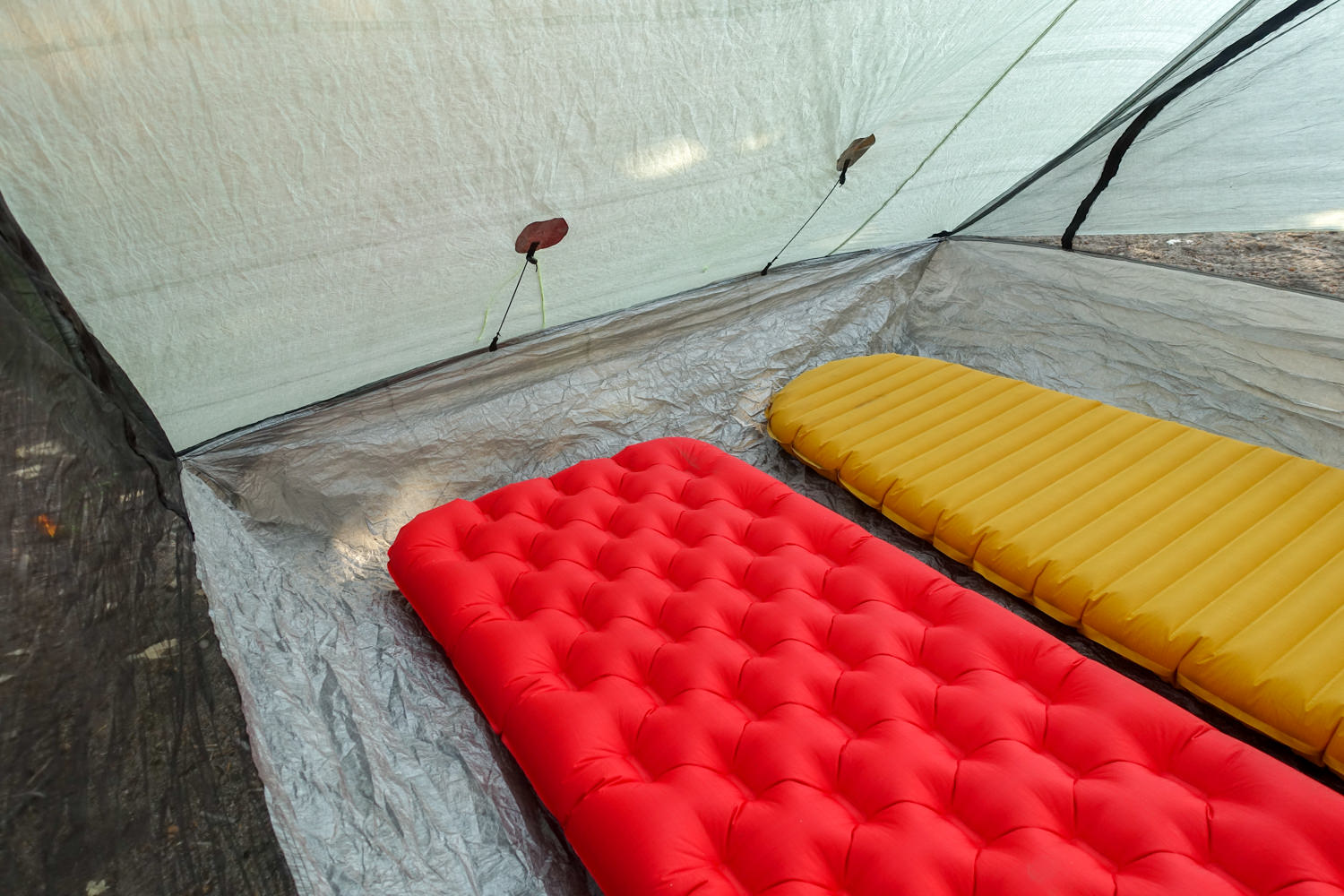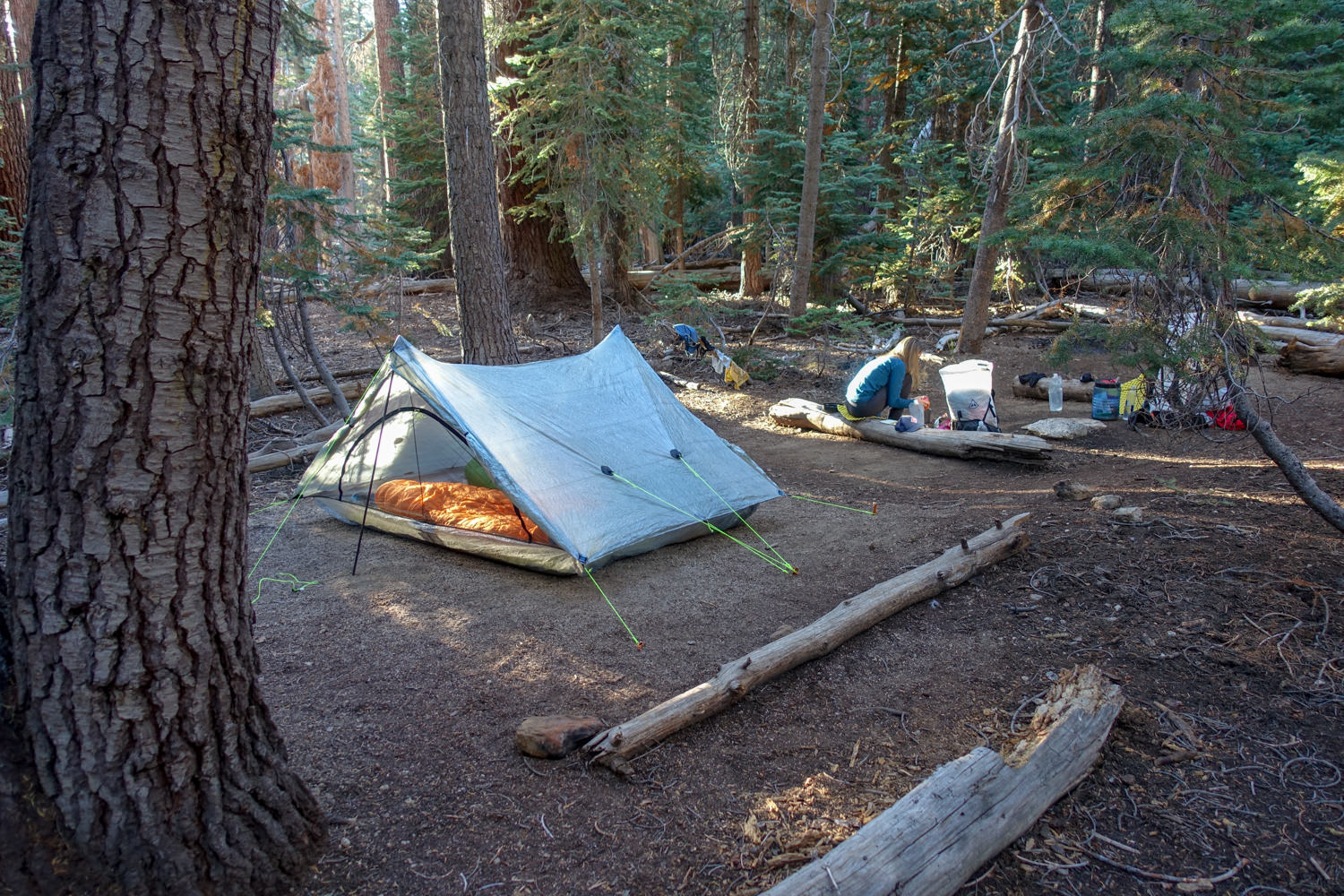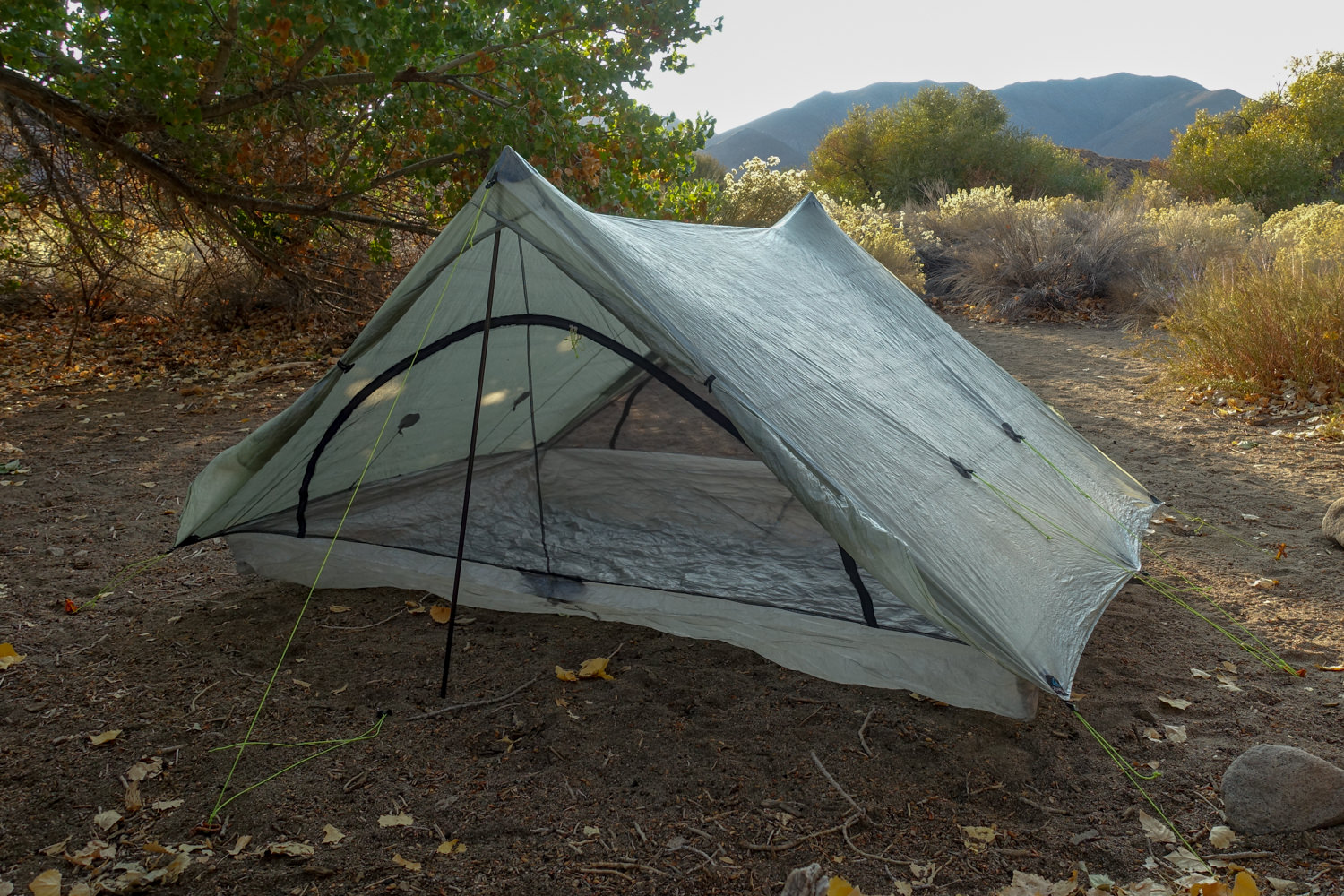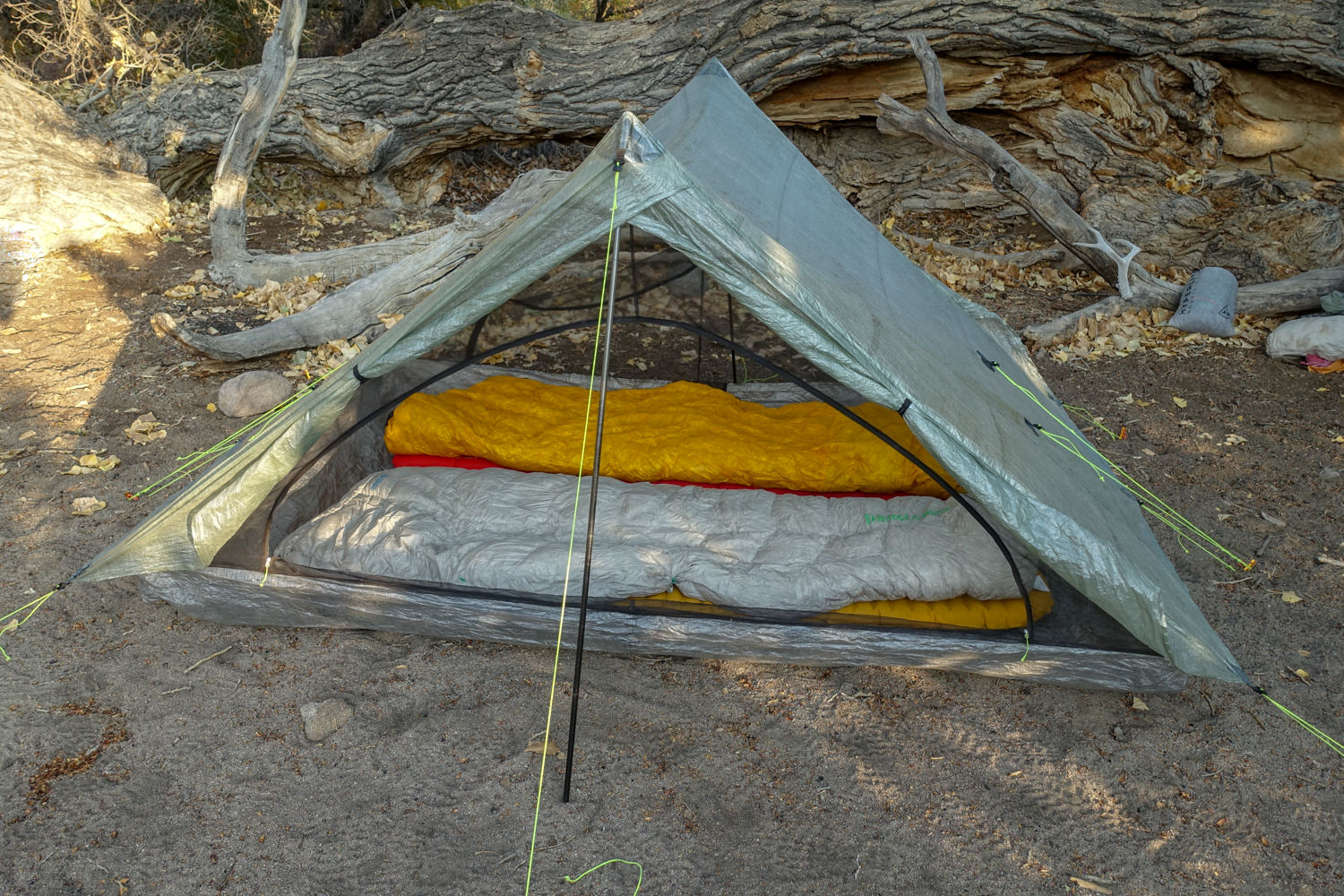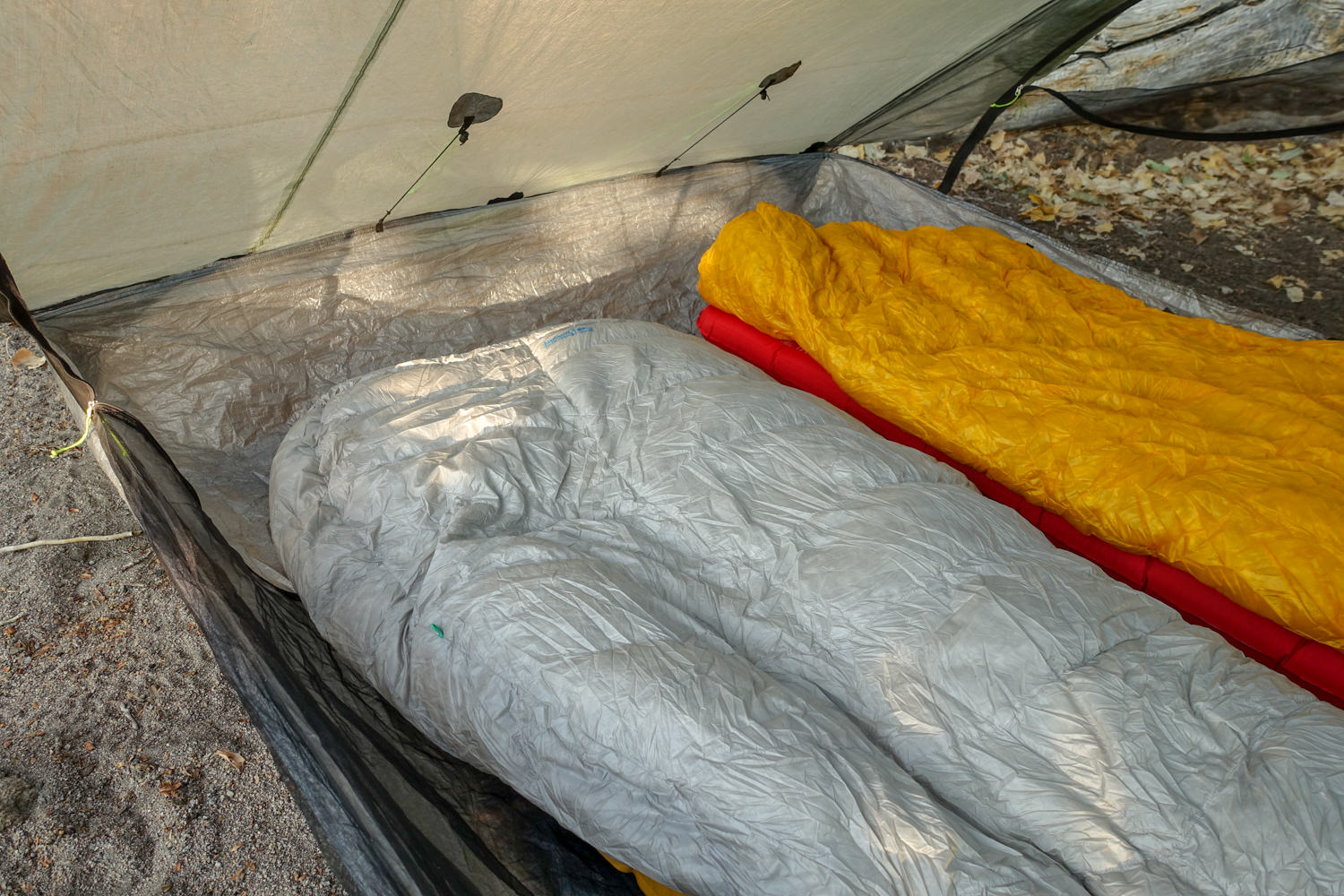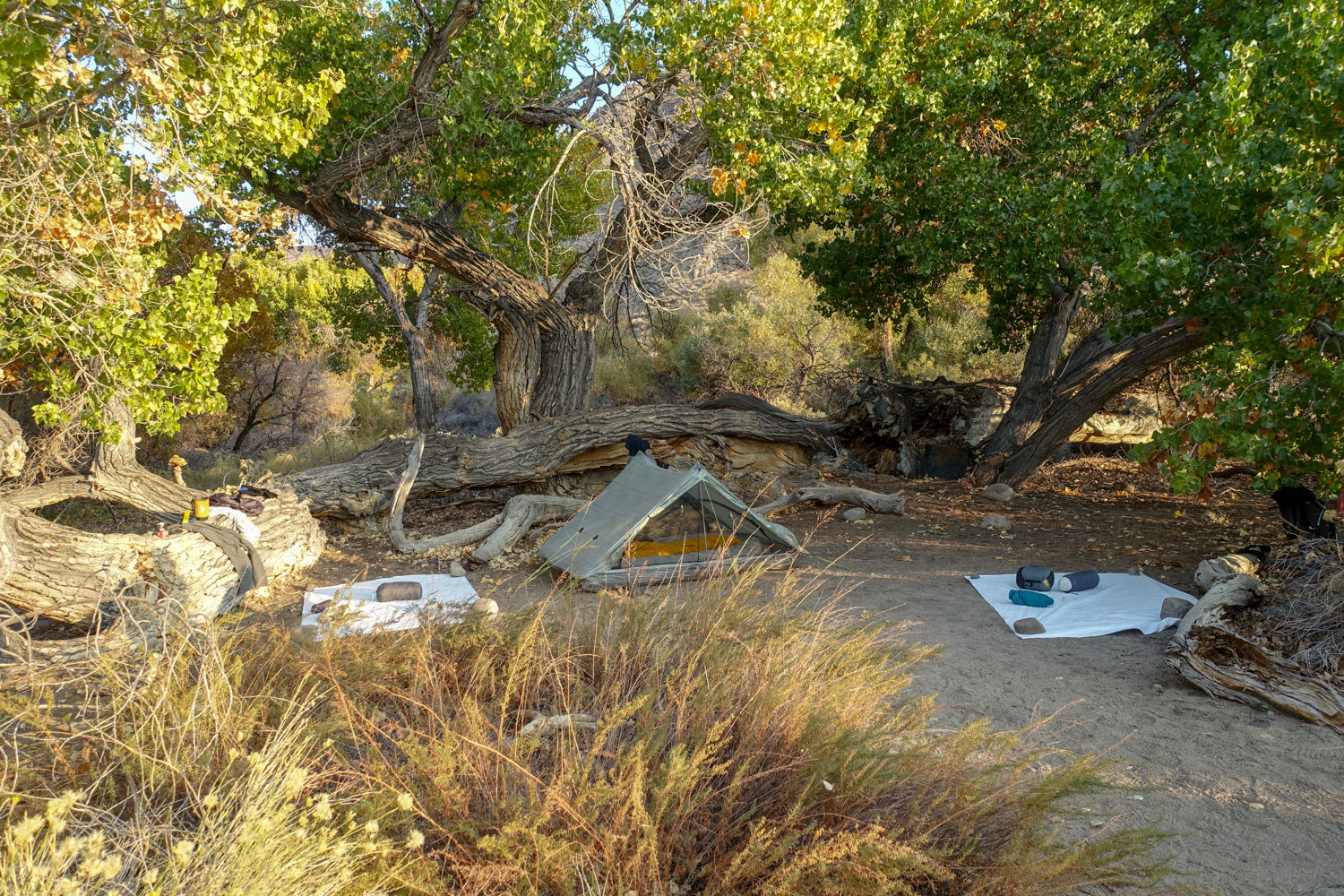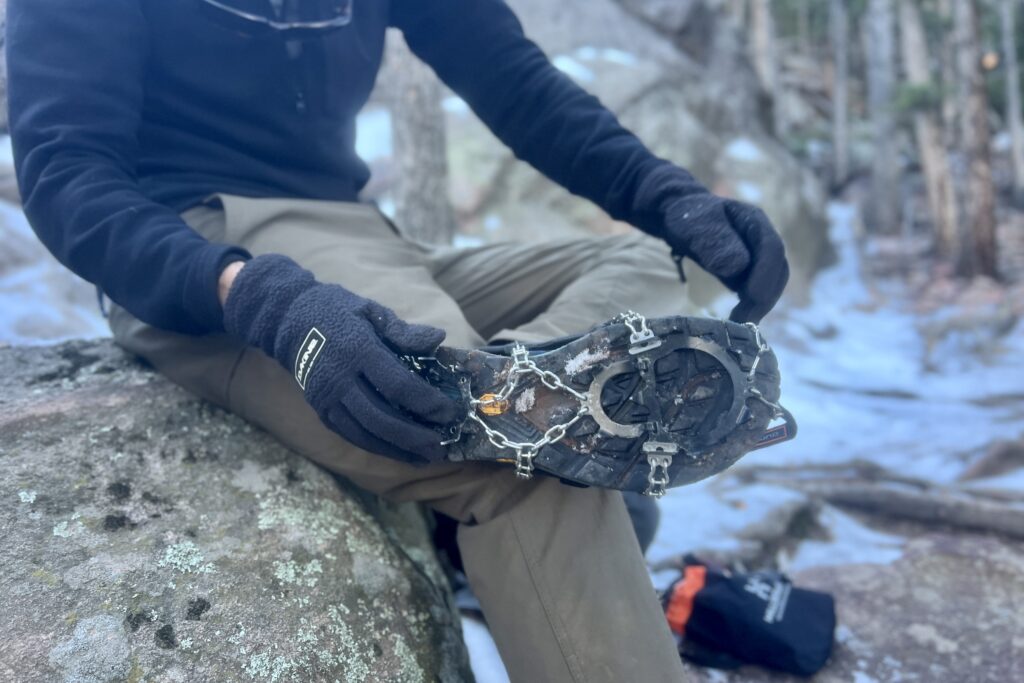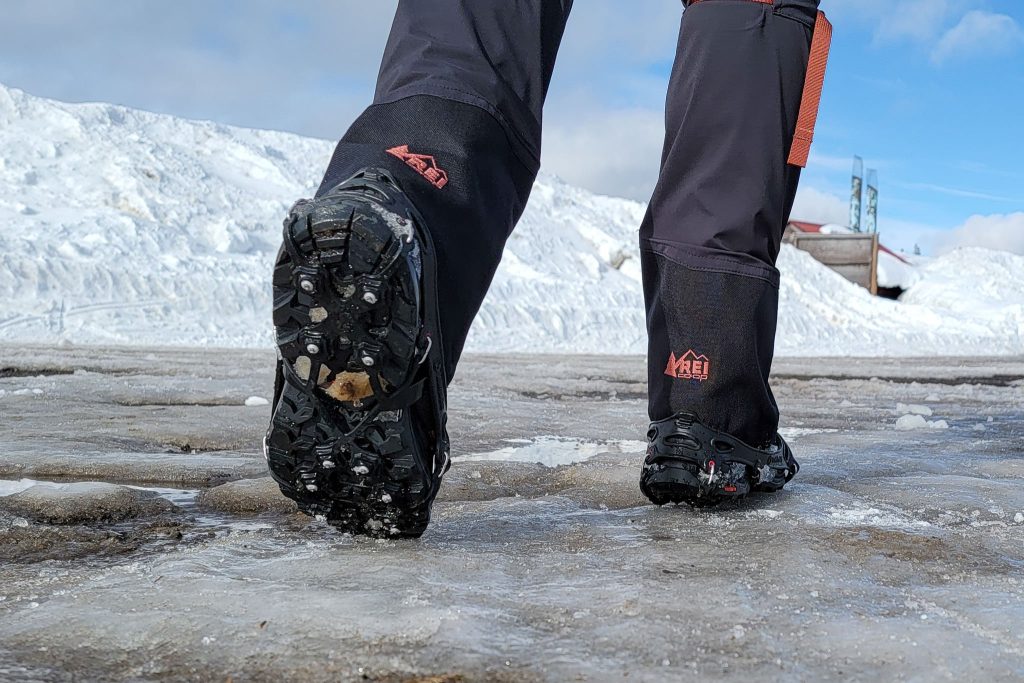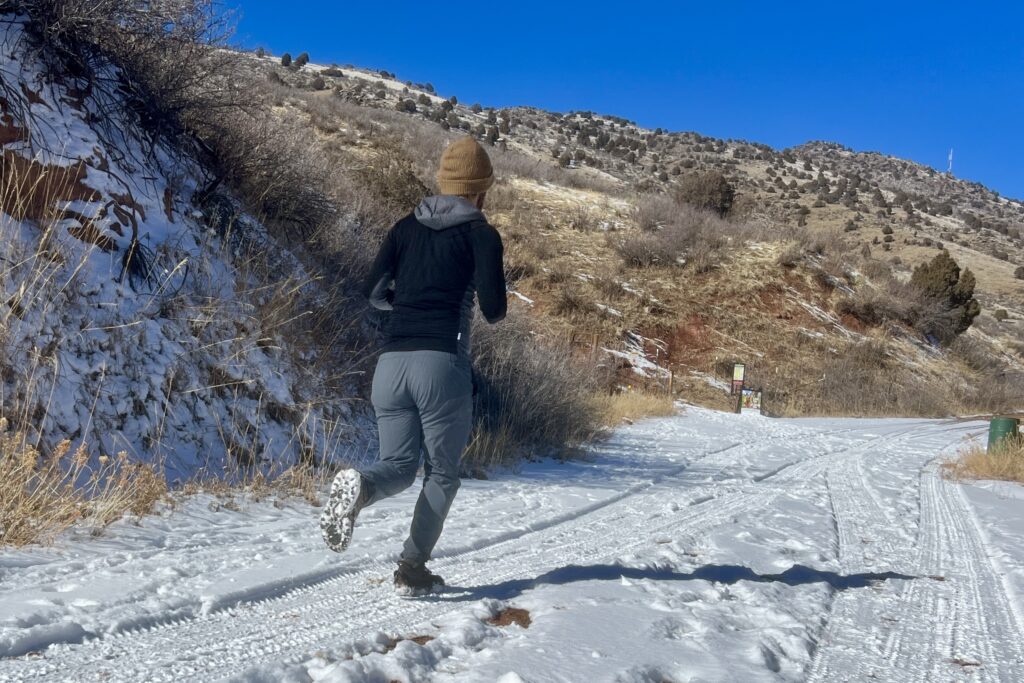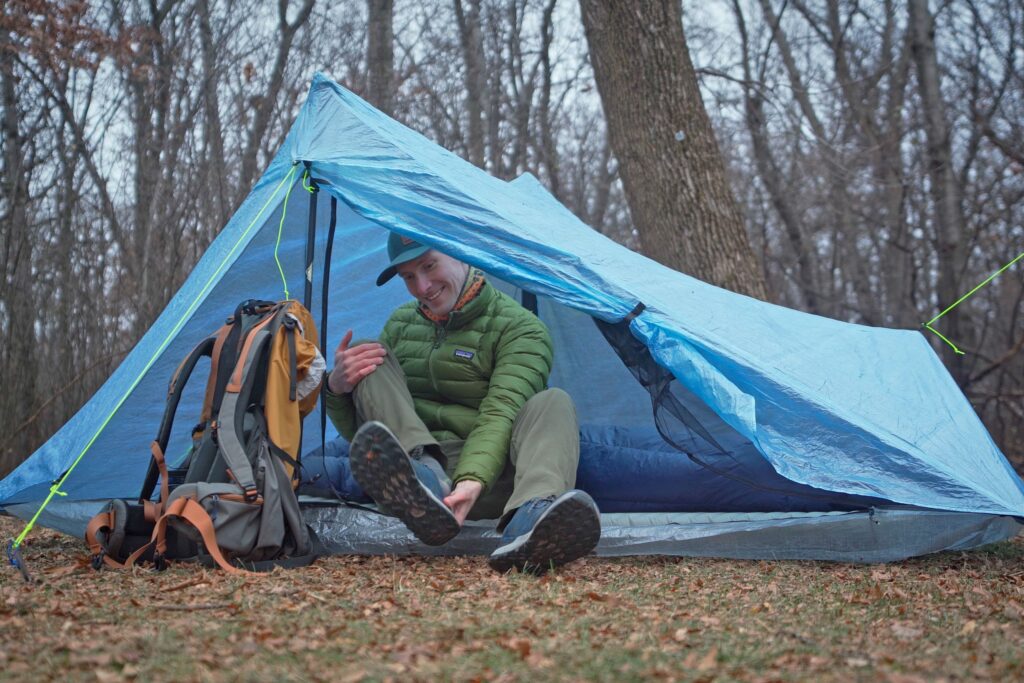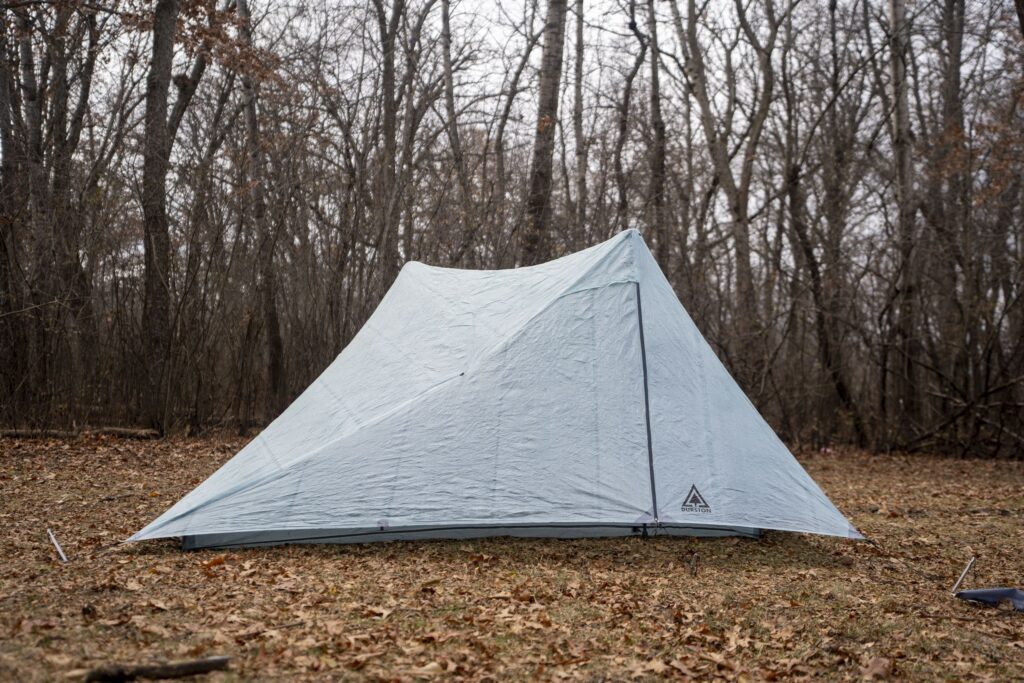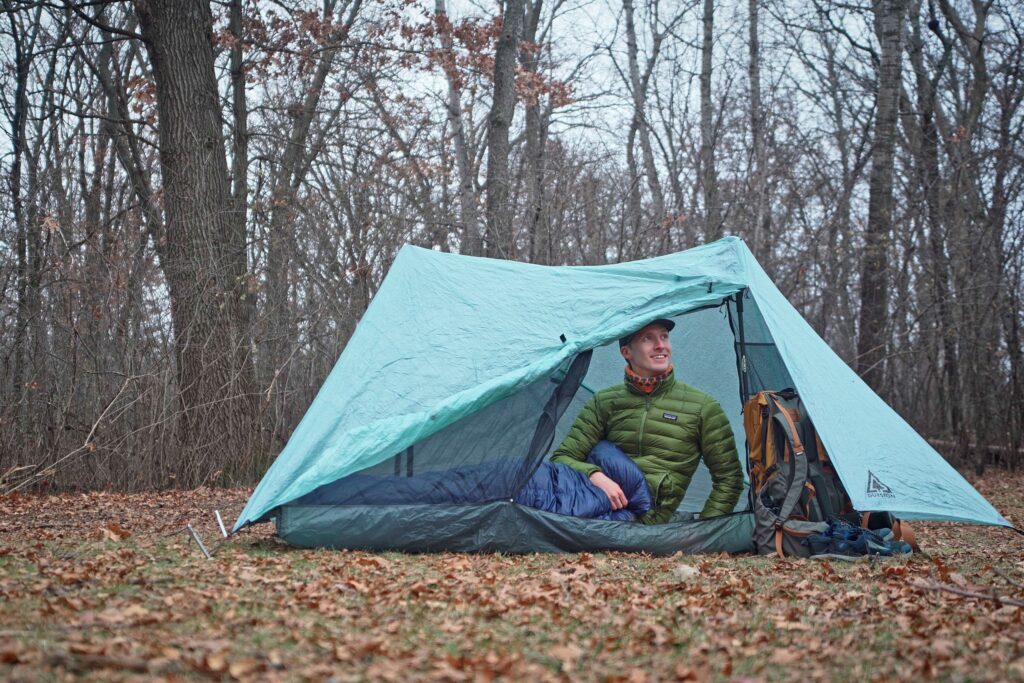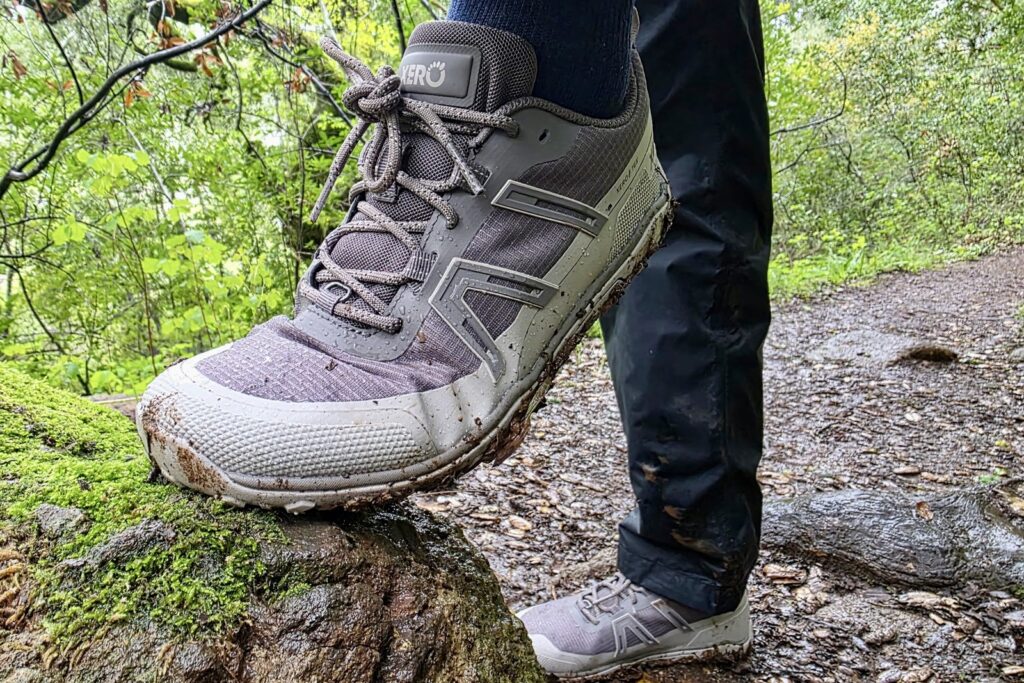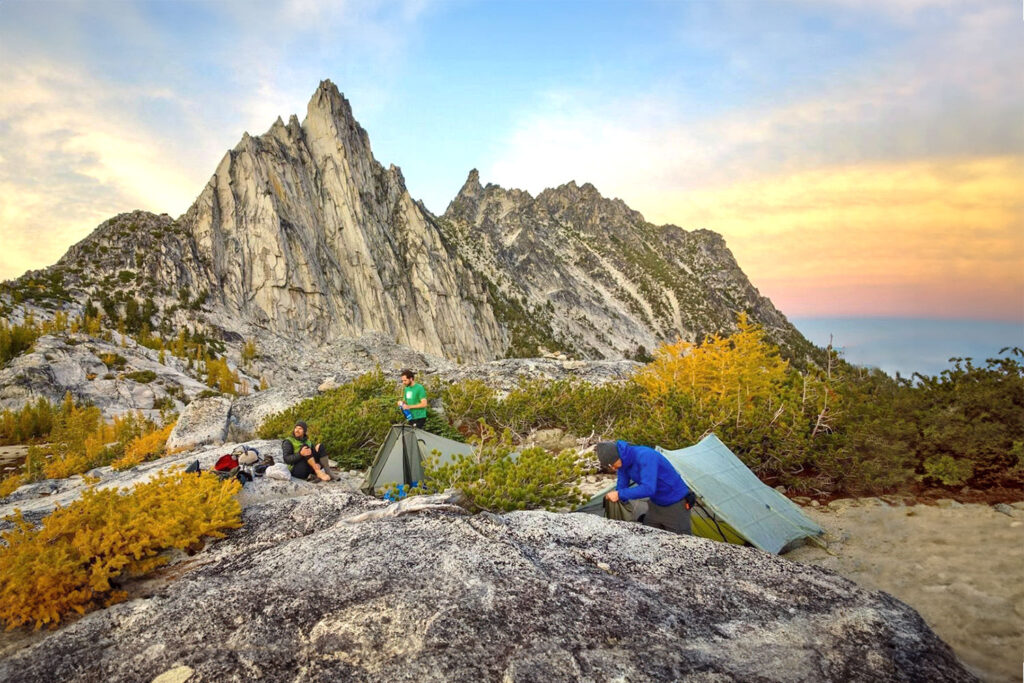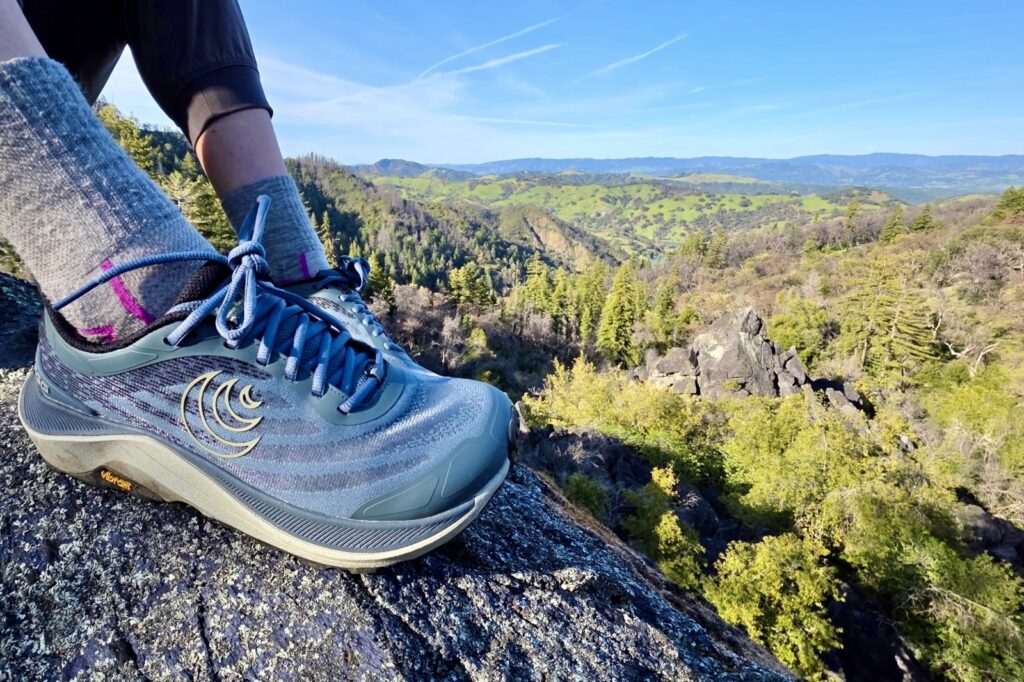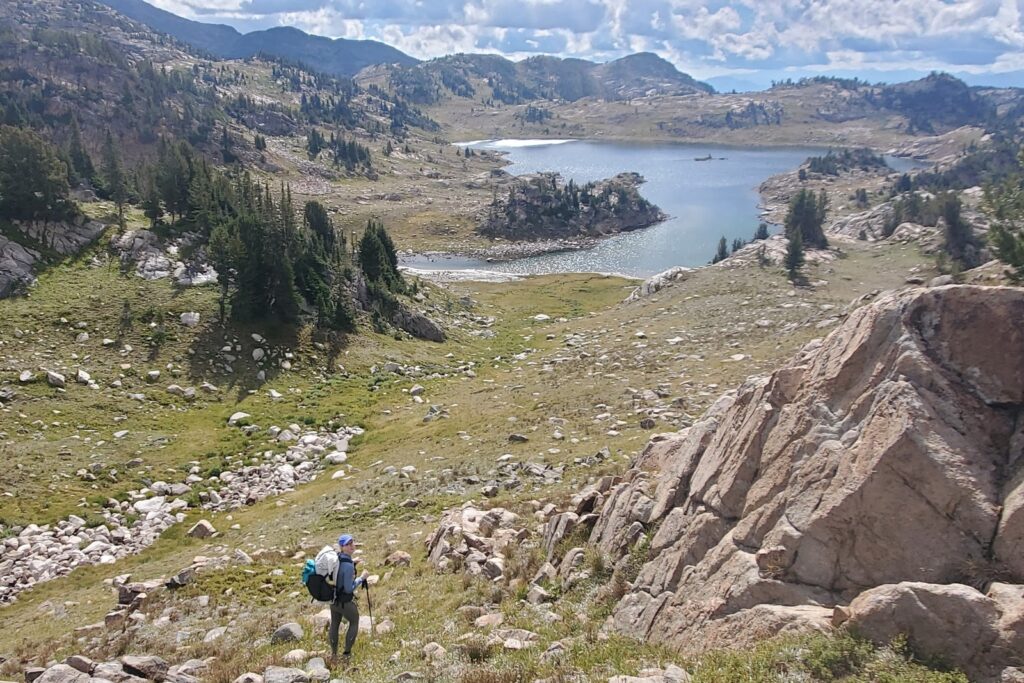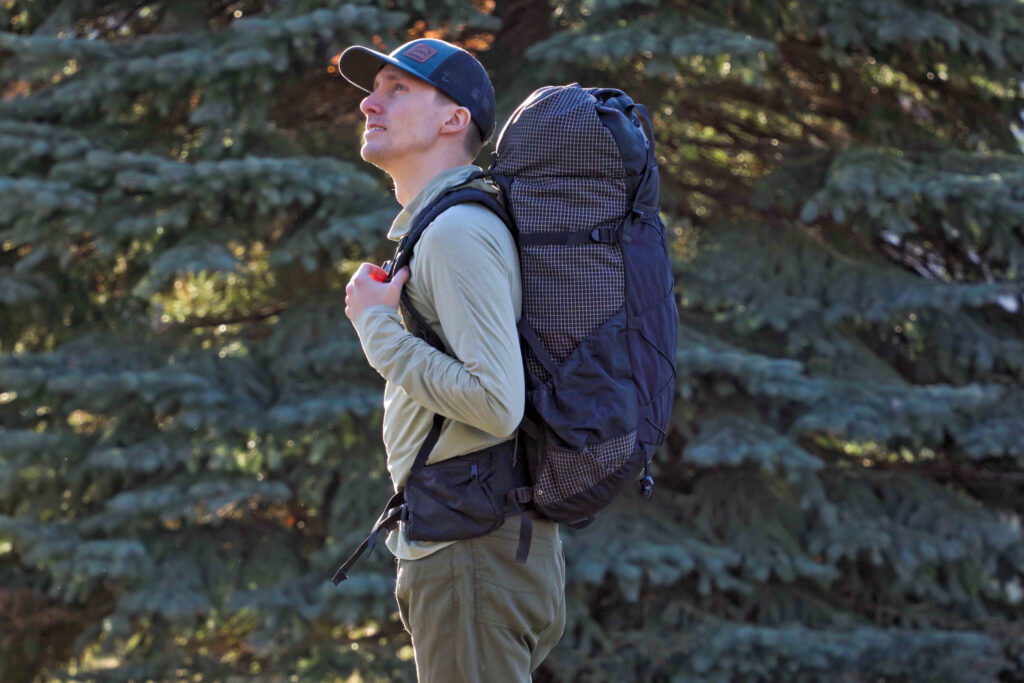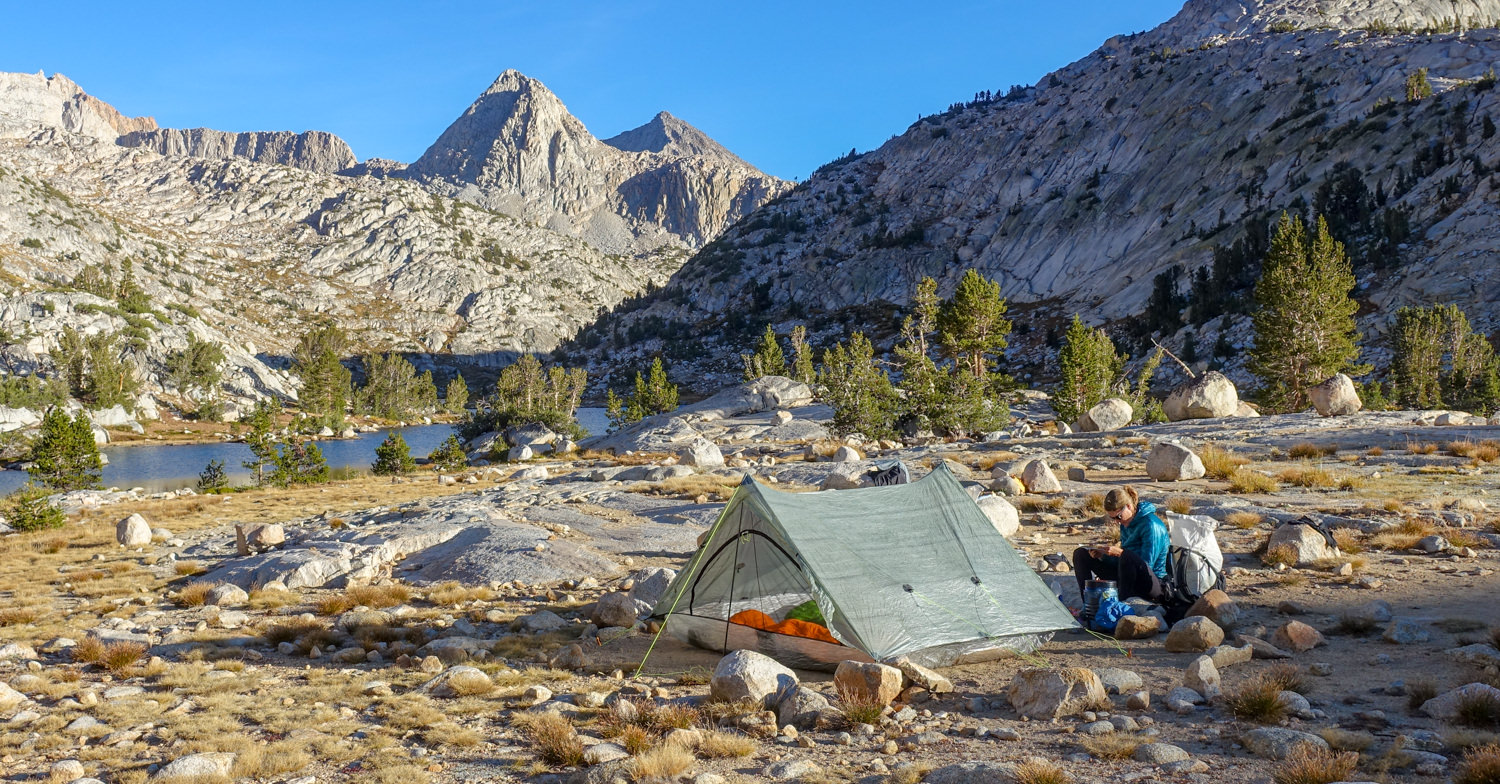
Bottom Line
The Zpacks Triplex Classic is an excellent choice for backpacking pairs who want a featherlight shelter without sacrificing space. CleverHiker founder Dave Collins has used the Triplex with his partner for many years. He’s logged over 100 nights and more than 2,000 miles, including a thru-hike of the 221-mile John Muir Trail, and found it a roomy option for two people who like to spread out while keeping weight to a minimum. At less than a pound and a half, the Triplex is a leader on our best backpacking tents and best ultralight tents guides when it comes to minimal-weight, high-volume shelters for grueling, long-distance trips. This tent does all the basics well: it’s durable, offers great weather protection, and with two doors, extensive headroom, and a relatively fast setup, the Triplex is a boss in the backcountry.
However, like all backcountry shelters, the Triplex has limitations. Its single-wall design can mean condensation in wet or cold conditions. Since it’s non-freestanding, this model requires more thoughtful campsite selection, staking, and setup, which can be more challenging on rocky terrain. The Triplex also has a very steep price tag, which doesn’t include stakes or trekking poles for a complete setup. That said, none of these issues are deal breakers if you’re looking for one of the best two-person ultralight shelters on the market and you plan to put it to good use. The Triplex is the gold standard for roomy, ultralight tents, and for serious hikers taking on long and challenging routes, it’s a smart investment that will last for hundreds of nights and thousands of miles. This shelter is one of our all-time favorite ultralight backpacking tents
Quick Specs
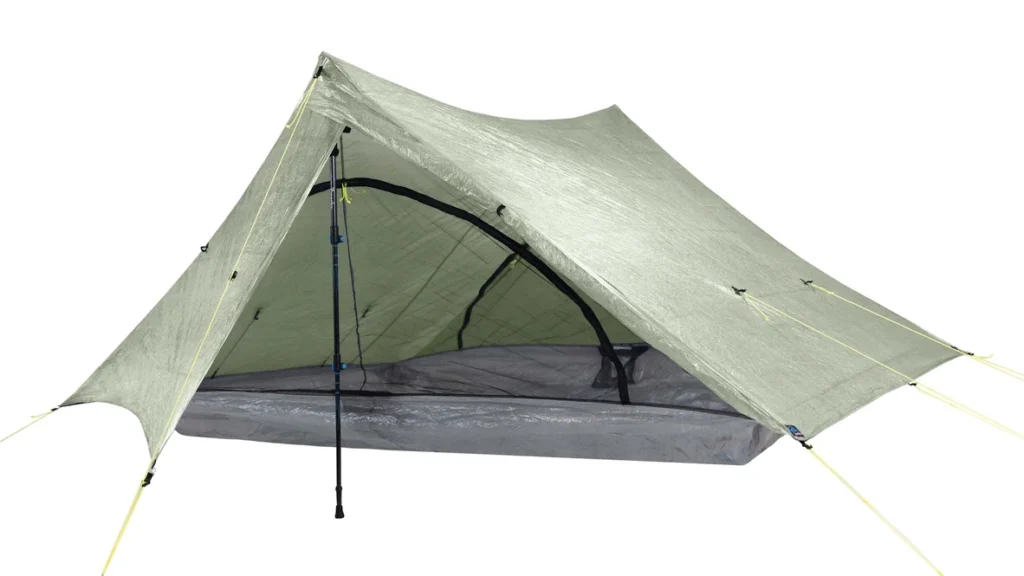
Zpacks Triplex Classic
Price: $799
Weight: 1 lb. 5.6 oz.(612 g)
Dimensions (HxWxL): 48″ x 60″ x 7.5′
Pros
- Ultralight
- 2 door/vestibules
- Ample space for two
- DCF material won't sag when wet or soak up water
- Trekking poles can double as tent poles
- Seams are factory-taped
Cons
- Expensive
- Condensation management necessary for single-wall tents
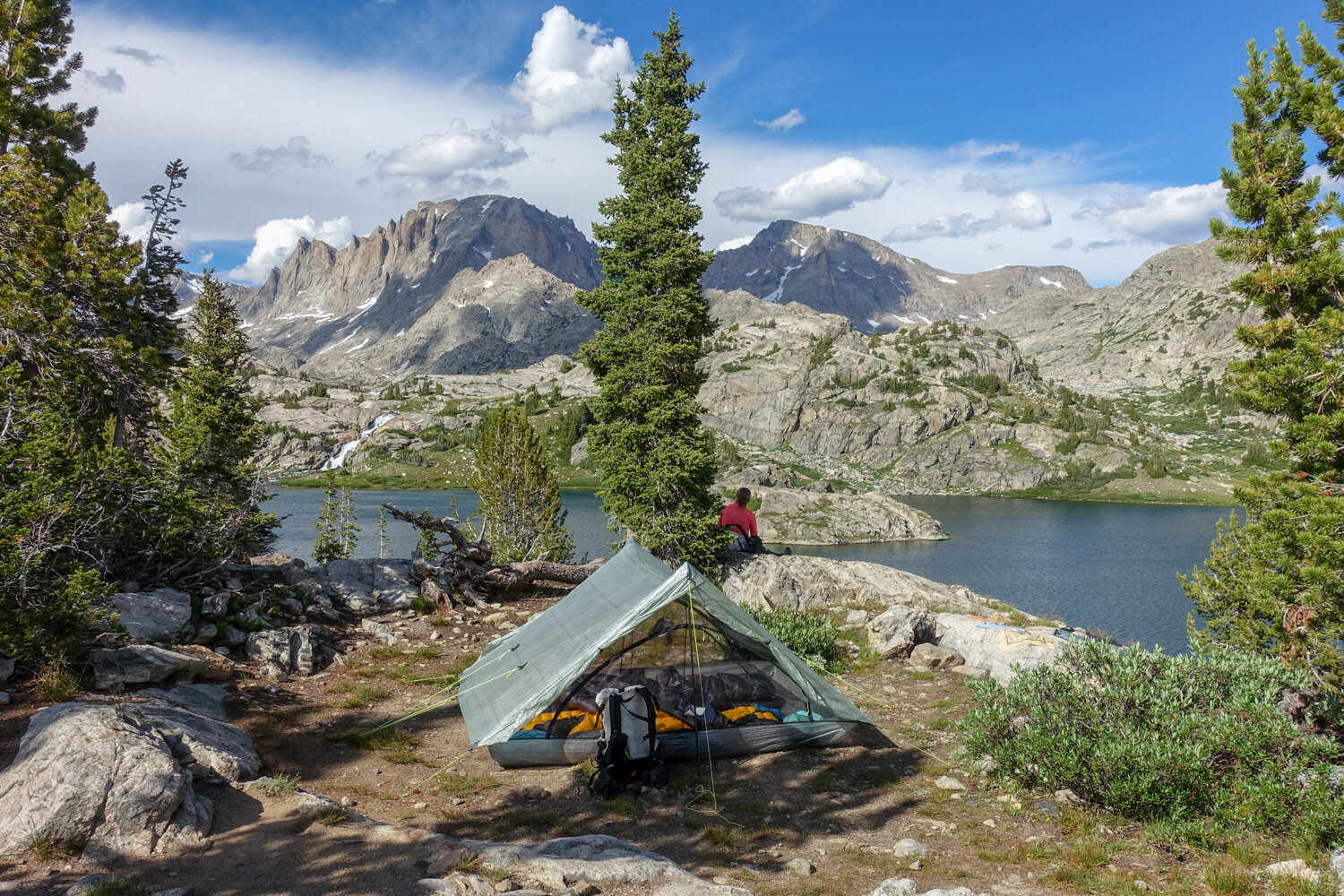
Comfort
The Zpacks Triplex is very comfortable for two adults who want more interior tent space without adding weight. The Triplex does just that: this is an excellent tent for people who like wide sleeping pads, prefer storing gear inside their tent, or want room for their dog. And with 48 inches of peak height, it has plenty of headroom to sit up and move around easily. While competitive ultralight tents often feel narrow and even claustrophobic, this model’s vertical sidewalls and 60-inch width make it feel airy and open. Zpacks does offer the popular Duplex for folks who don’t need the extra width, and we love that tent too, but if you want a bit more room for two hikers for a minimal weight increase, the Triplex is an excellent choice.
Two wide sleeping pads fit easily side by side in the Triplex, and with two doors, both campers get their own door and vestibule for easy entry and exit with tons of space to store gear. The storm doors are held back with no-fuss metal hooks. Two small mesh pockets inside the tent are just big enough to store devices and handheld items. And since the Triplex uses DCF material, it stays taut in wet and cold conditions, so you’ll avoid the sag of silnylon and silpoly that lead to droopy walls.
But the Triplex isn’t perfect. While it has effective ventilation with the doors, the single-wall construction is still prone to condensation buildup when the weather turns cold or wet. And, if you’re looking for increased livability thanks to internal storage, this tent will fall short. Its internal mesh storage pockets are unimpressive and small, and their low placement on the tent means that they inevitably get buried under other gear quickly. Finally, the Triplex is marketed as a three-person tent, but we disagree – it would feel cramped with three adults. Instead, we think this as a very spacious ultralight shelter for two people, or a pair with a dog up to 75 pounds.
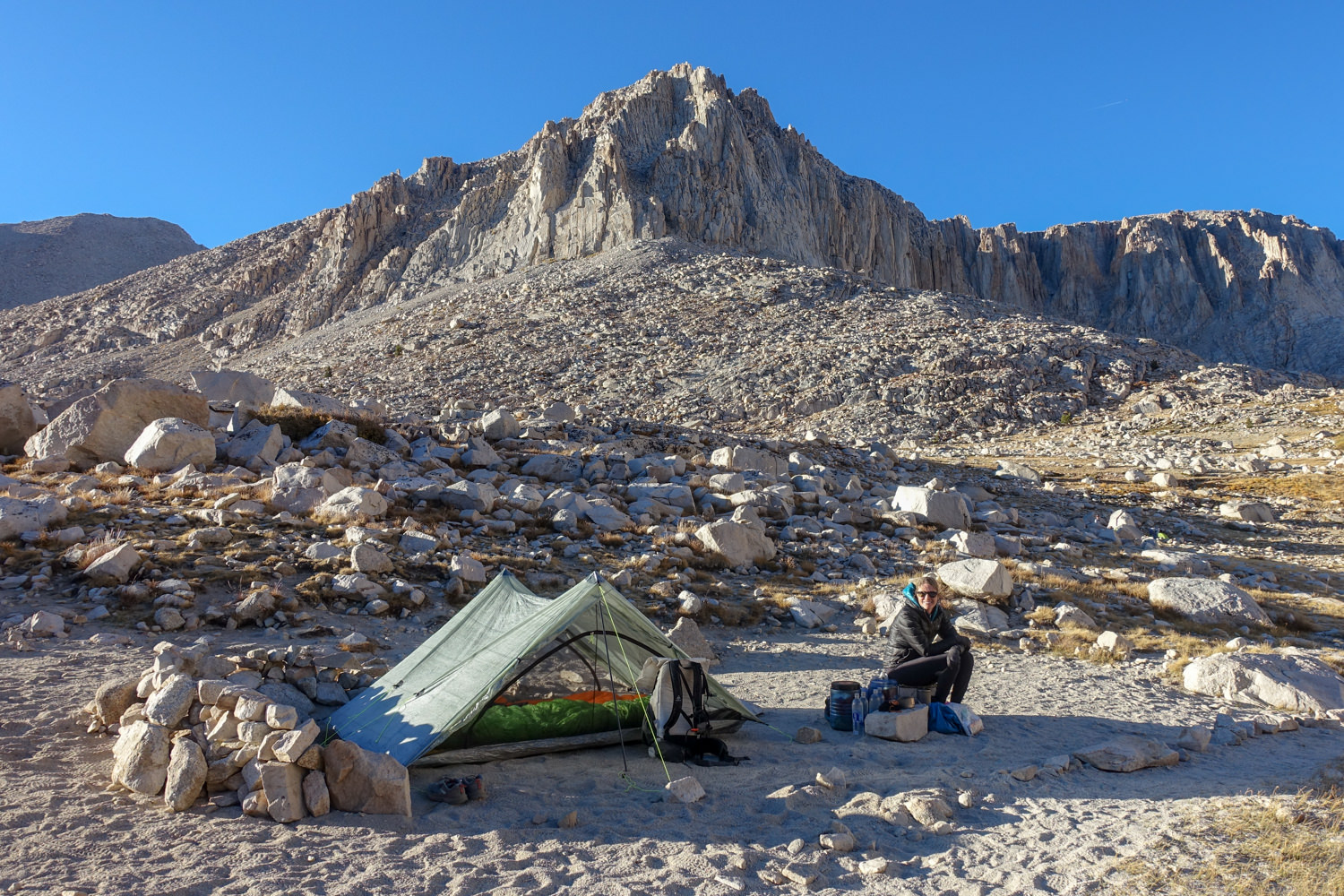
Weight & Packability
The Triplex is super spacious when set up, but compresses into a small, 8 by-13-inch package that will fit horizontally into almost any backpack. Tipping the scales at only 1.4 pounds for the tent body, it’s also remarkably lightweight for such a roomy shelter – a huge advantage when saving energy on long hikes. If you already use trekking poles, they can double as tent poles, saving you weight – although even with medium-weight tent stakes and carbon fiber poles, your Triplex will be less than two pounds. Zpacks keep the weight down by using Dyneema Composite Fabric (DCF) for the floor and fly. Not only is DCF some of the lightest fabric out there, but it’s strong, fully waterproof, and fast-drying. The Triplex will be a great fit for couples who really want to minimize weight while taking on challenging terrain and big adventures.
But, as with all the products we test, it’s the devil in the details that we sniff out. While the low weight of the Triplex is impressive, it doesn’t include the poles or stakes, which are sold separately – so make sure you’re accounting for the additional cost and weight of these components. And DCF can be a bit annoying to pack up, since it breaks down faster if you stuff it. That means you’ll need to get in the habit of folding and rolling your tent. Finally, DCF packs up more bulky than silnylon or silpoly. Although its packed size is still very competitive and reasonable, it’s less compressible than the same amount of nylon or polyester and takes up a bit more space in your pack.
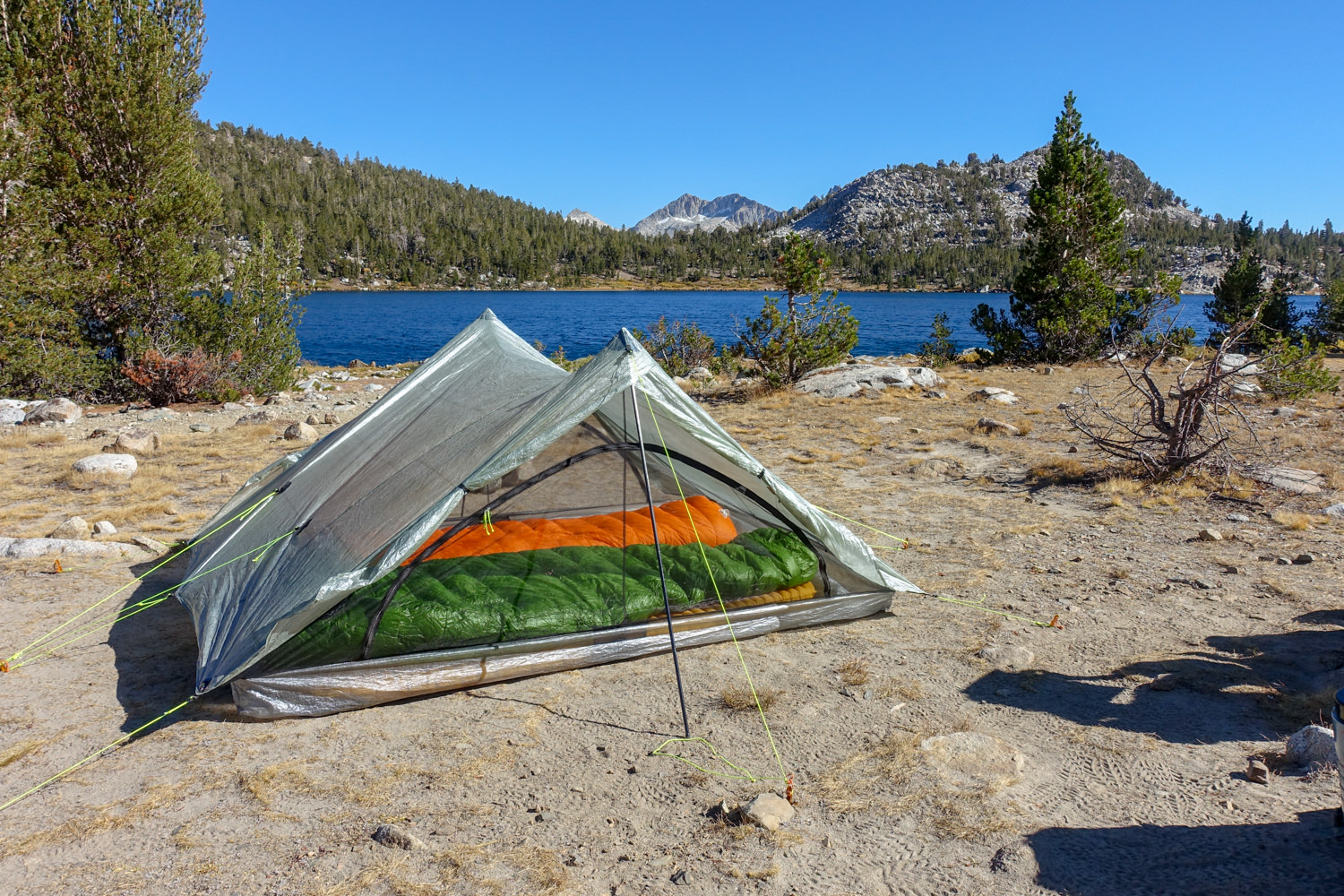
Weather Resistance
The Zpacks Triplex performs well in wind and rain. Its DCF construction is very effective in summer storm conditions: DCF is fully waterproof, fast drying, and highly durable. That means your tent won’t absorb water or sag like silpoly and silnylon competitors if it’s pouring rain or the temperatures are dropping – and the Triplex will keep its taut pitch all night, with no adjustments needed. Zpacks also factory-tapes all the seams and reinforces corners for total waterproofing that will keep you dry during downpours. The dual vestibules offer plenty of dry storage to keep backpacks and shoes out of the rain, and the 8-inch bathtub floor blocks any potential splashback from puddles or mud during entry and exit.
As with most single-wall tents, the biggest issue with the Triplex is condensation management, especially in cold and wet climates. The Triplex Classic doesn’t have peak vents. But they added them on the Triplex Zip, so if you’re looking for the added apex ventilation in addition to the storm doors, it is a great addition to condensation management. Toggles keep the overlapping rainfly doors closed when it’s raining, and the gaps between the toggles provide a bit of ventilation. When the weather is calm, and the skies are clear, we recommend leaving at least one to two doors open to keep airflow in the tent and condensation at bay.
Also, keep in mind that non-freestanding tents like the Triplex require precise staking to give you maximum storm protection. That means if you’re setting up camp in rocky or hard campsites, or in windy weather, getting a tight setup can be more difficult. In situations like this, you might need to get creative to secure tent stakes – by stacking rocks on stakes, for example, to hold them in place firmly. Additionally, the Triplex doesn’t include stakes or poles, so you’ll need to invest in strong, reliable components to ensure your tent can handle any site and conditions.
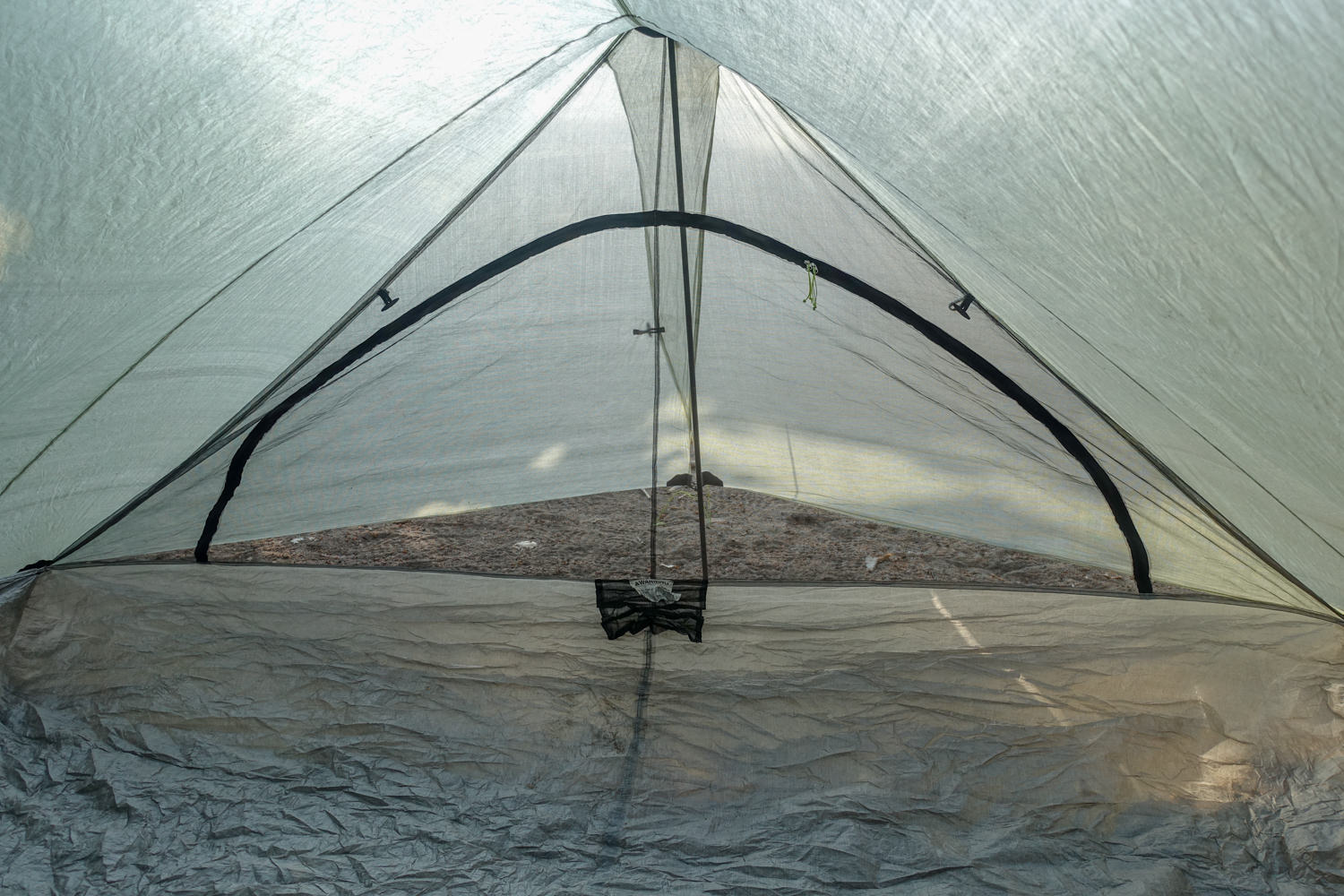
Ease of Setup
If you’re familiar with setting up non-freestanding tents, the Triplex is fairly standard. If you’re new to tents like this, expect the setup to be more cumbersome than you’re used to with the typical freestanding tent. Zpacks offers easy-to-follow setup instructions, and the steps are relatively easy to learn. The Triplex relies on trekking poles (or carbon-fiber poles) to pitch, and this tent’s symmetrical design makes setup fairly straightforward for two people. Especially after pitching a few times, it’s relatively easy to line up the tent correctly, and it only needs eight stakes to dial in the pitch. The DCF material holds its shape well and is straightforward to unpack, fold, and roll up. Once you’re familiar with the process, two people can pitch the Triplex in about 5-10 minutes.
However, there is a learning curve to perfecting the pitch of the Triplex. You’ll want to practice setting up your tent up a few times in a low-stakes place like your backyard or the frontcountry to make sure you’ve got the steps down. Because it’s non-freestanding, the Triplex can require creative thinking when you’re dealing with limited, rocky or hard campsites where stakes don’t hold as well. In challenging places above treeline, using rocks and logs as anchor points can lengthen setup time. These are small cons, though – in most situations, this tent is decently fast and easy to set up for two people in favorable conditions.

Durability
The Zpacks Triplex is a strong shelter. It combines burly, lightweight, custom components like hooks, tabs, and toggles with double-sewn seams to make a reliable shelter that will last for years if taken care of. While there is a Triplex version with a zippered fly available, the standard Triplex is a better choice for durability since the toggles won’t fail and are easy to fix. The key to the Triplex’s durability is its DCF construction: DCF is naturally tear and water-resistant so that the Triplex will stay tight and strong in hot July temps and won’t sag or droop in cold and wet October conditions. The floor is made from thicker DCF, protecting you and your gear against wear and punctures. There’s a groundsheet available for separate purchase, but we haven’t needed it – the floor holds up well even after hiking thousands of miles with this tent. But, if the DCF does fail in the field, Zpacks also includes DCF repair patches with this shelter.
All that said, DCF isn’t as tough as some heavier-duty fabrics and can still snag or tear if you’re not careful with it. So, as always, we recommend removing any pokey twigs, rocks, and debris from your campsite that could puncture your tent. DCF also wears faster when the material is scrunched and stuffed, so instead of jamming your tent into its stuff sack, we recommend folding and rolling it for longevity’s sake. Finally, the dome shape of the interior mesh doors means they flop directly into the interior floor of the tent without any tiebacks. In theory, this can lead to damaged mesh, so you’ll want to be mindful of door placement, but in our experience, this hasn’t been an issue.
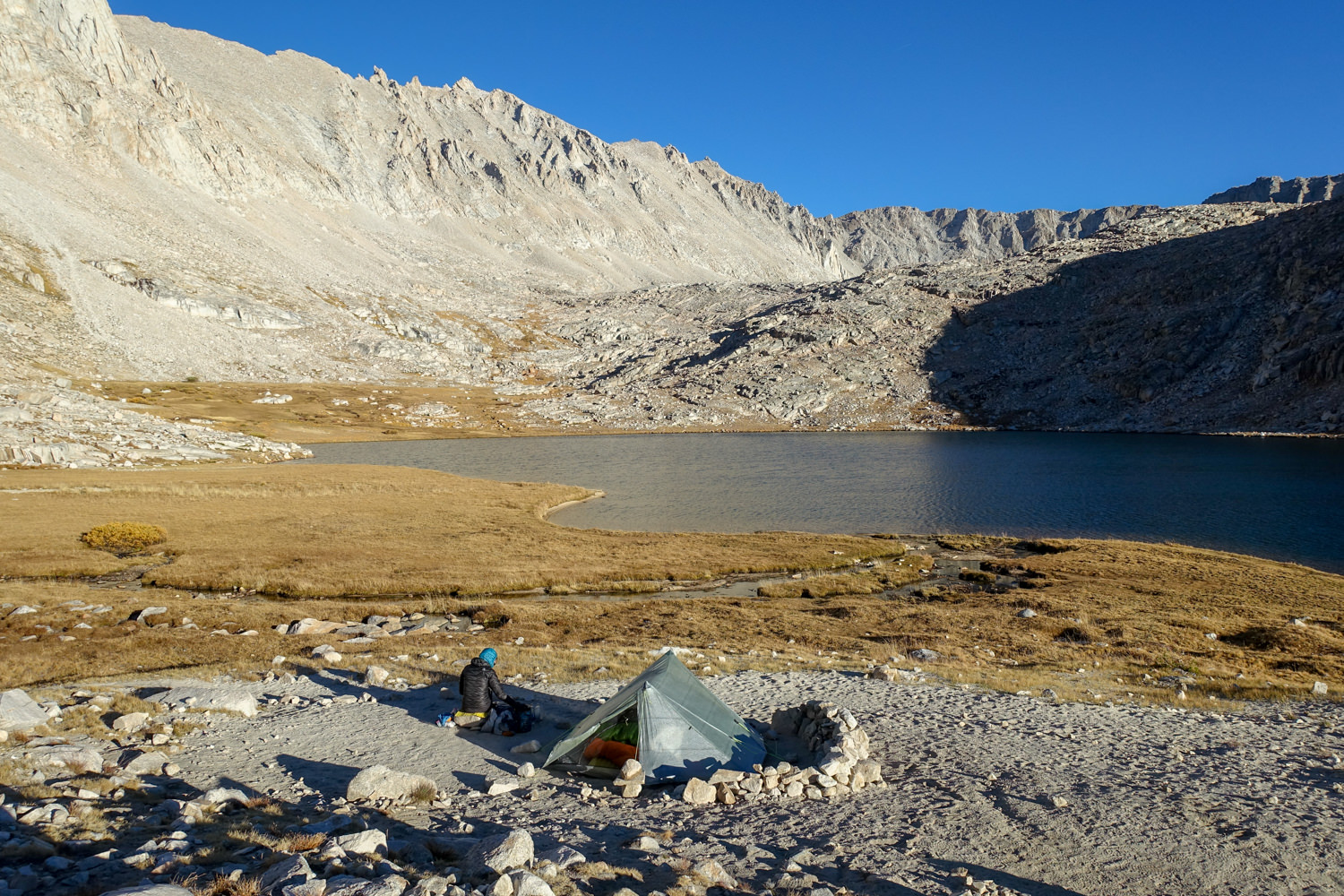
Should You Buy the Zpacks Triplex Classic?
The Zpacks Triplex Classic is for serious backpacking partners who want the lightest possible tent with the most room. Thanks to its incredibly lightweight design and simple feature set, you’ll be hard-pressed to find a roomier ultralight tent for two on big adventures. The Triplex offers everything you need in the backcountry, and nothing you don’t: its two vestibules, doors, and durable, waterproof DCF fabric are perfect for sharing a shelter, tackling rugged trails, and hiking in variable conditions. And if you’re using trekking poles already, they can double as your tent poles, cutting even more weight from your pack.
On the flip side, the Triplex is not for casual weekend backpackers or those who want a fast, easy pitch. The performance of this tent relies entirely on proper staking for a stable setup, which can be a challenge in rocky terrain. Also, the single-wall design means you’ll have to manage interior condensation on cold and wet nights. This makes the Triplex less suitable for beginners or anyone who prioritizes convenience over weight savings. And this model only has two tiny interior mesh pockets, so it has fewer creature comforts than competitors. It also costs a pretty penny, so it’s less accessible for folks on a budget. But if you’re an experienced backpacker taking on ambitious and challenging adventures, the Triplex is one of our all-time favorite tents, and we highly recommend it
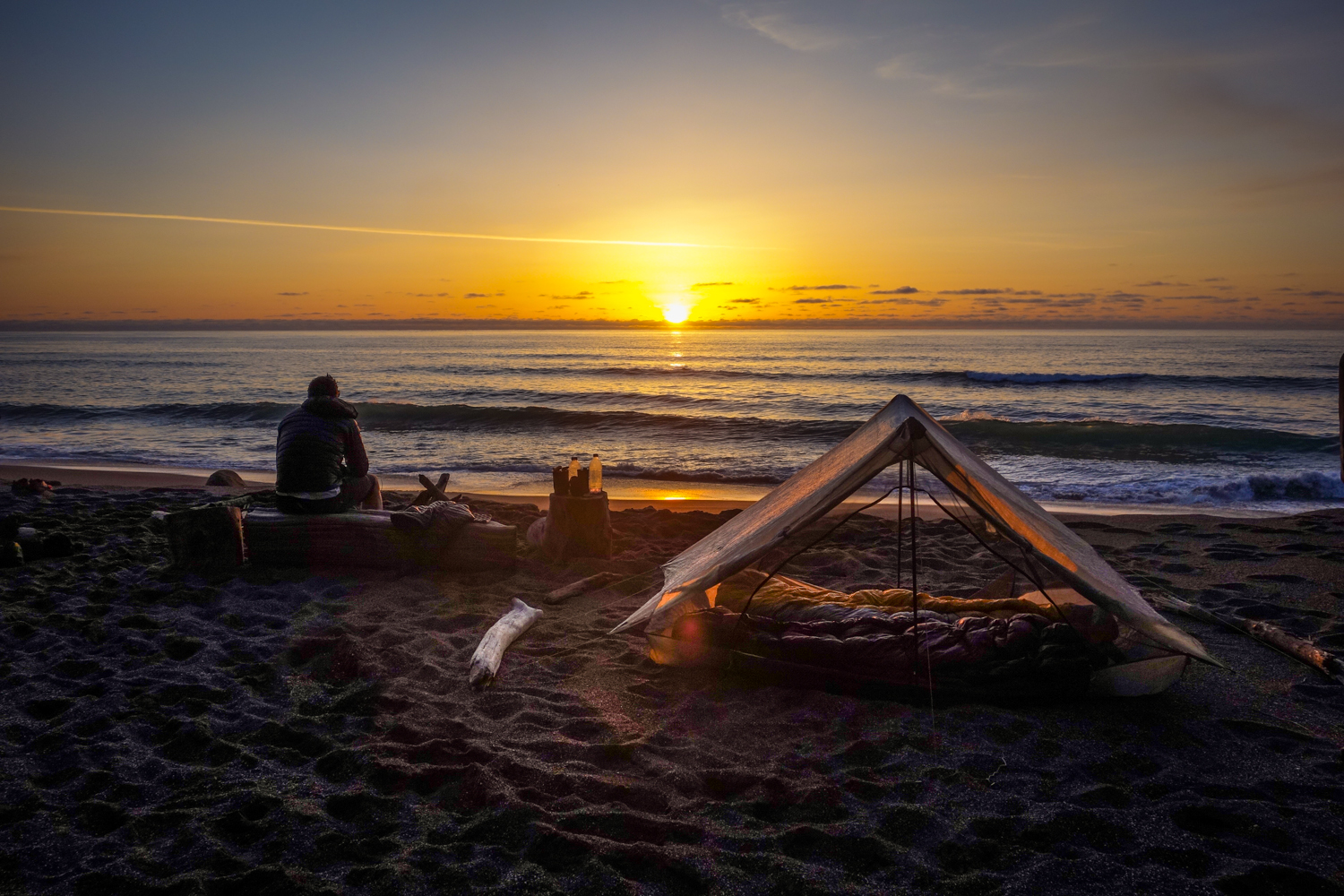
What Other Backpacking Tents Should You Consider?
ZPacks Duplex Review: If the size, price tag, or slight extra weight of the Triplex isn’t clicking for you, the standard two-person Duplex might be all you need. It’s nearly identical to the Triplex and is a fantastic ultralight option for two people, but it’s a bit narrower, weighs even less, and is a little lighter on the wallet. That said, the interior room is more limited for larger hikers.
Six Moon Designs Lunar Duo Review: The Six Moon Designs Lunar Duo is a standout, budget-friendly alternative to the Triplex and offers impressive space without the steep cost. It’s a bit narrower than the Triplex (6 inches), but it shares the same length and has plenty of headroom for two people to sit up and move around. The Lunar Duo is made from silpoly fabric, so it weighs quite a bit more than the Triplex (though still pretty reasonable), and it’s prone to sagging and interior condensation in cold/wet conditions.
Tiger Wall UL 3 Tent: If you like the idea of a roomy, ultralight tent, but want something easier to use and a bit more affordable, check out The Tiger Wall UL 3. This tent is very roomy for two hikers, has excellent pocket storage, and is one of the lightest semi-freestanding tents on the market. Its more traditional double-wall design means you won’t have to worry about interior condensation, and you can leave the rainfly off for a starry view on clear nights. The Tiger Wall isn’t as light as the Triplex and it doesn’t use DCF fabric, but it still has a lot to love.
Durston X-Mid 2: The Durston X-Mid 2 is similar to the Zpacks Triplex in that it’s non-freestanding and offers a decently roomy interior (not as spacious as the Triplex) with two doors and simple pockets. But the big difference? The price. The X-Mid 2 costs less than half the price of the Triplex. It does weigh quite a bit more and its asymmetrical setup is not as straightforward, but it’s a very affordable lightweight tent.


